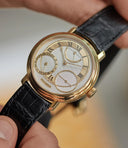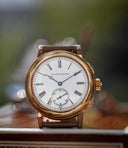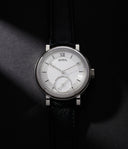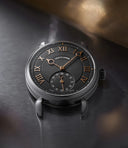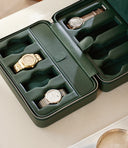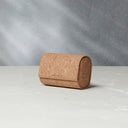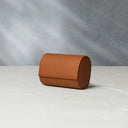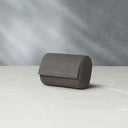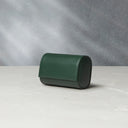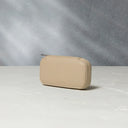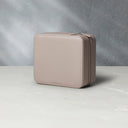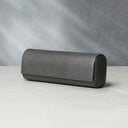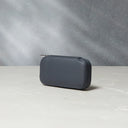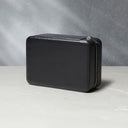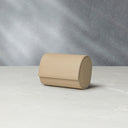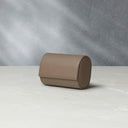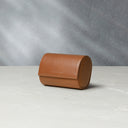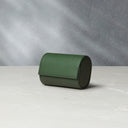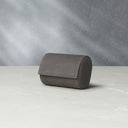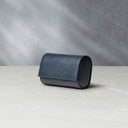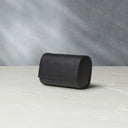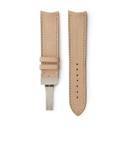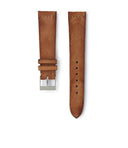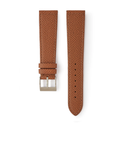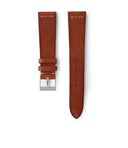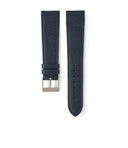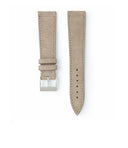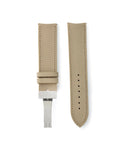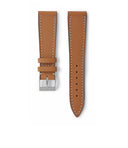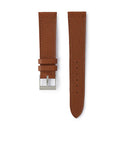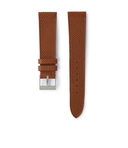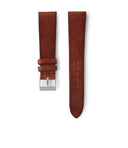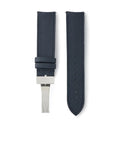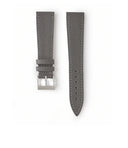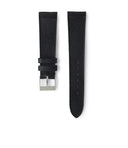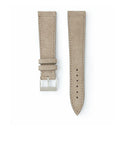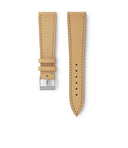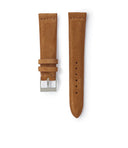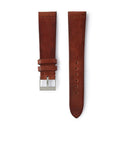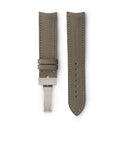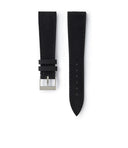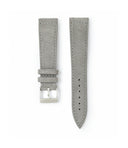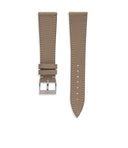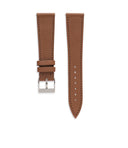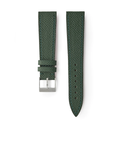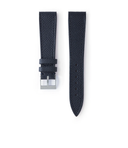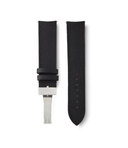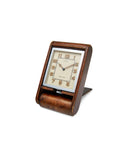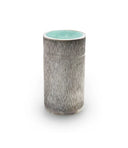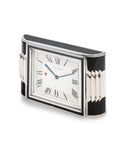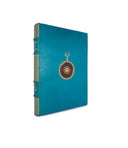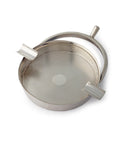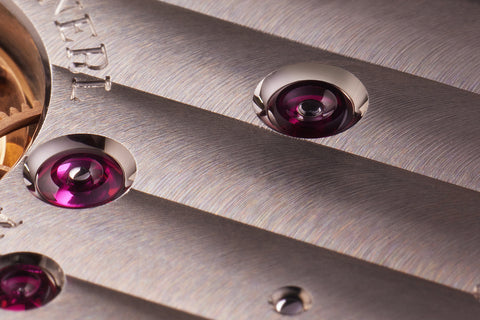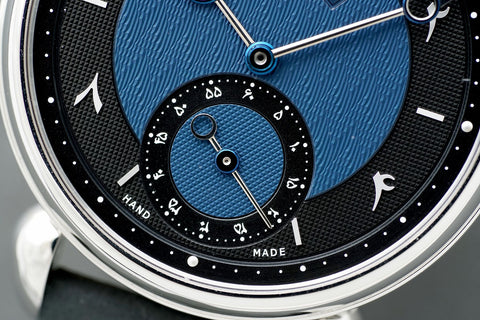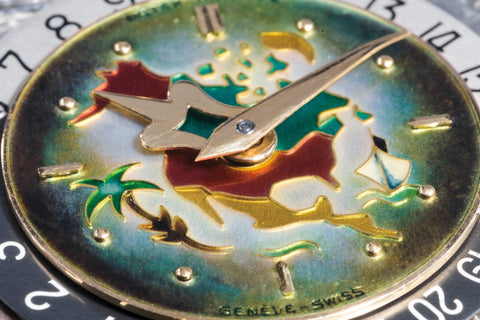

The story of AKRIVIA
Raj Aditya Chaudhuri
In our introduction to Rexhep Rexhepi, we chronicled the watchmaker’s personal story coloured in by those closest to him, who knew him long before he became one of the best recognised independent watchmakers. By understanding what drove this young boy, who escaped conflict in Kosovo to find himself in Swiss watchmaking, we can better appreciate his craft.
In this second instalment of the series, we closely examine the watches Rexhepi produced under the AKRIVIA brand. The name is a reference to the Greek word for precision and the reference that were produced under it presented the watchmaker’s unadulterated vision of modern haute horlogerie, far removed from his classical training.
Released between 2013 and 2017, these six references – the AK-01, AK-02, AK-03, AK-04, AK-05 and the AK-06 – rare then the first frenzied artistic phase of Rexhepi’s career. The young watchmaker paired a bold aesthetic with complications and fine manual finishing as he iterated and experimented as he sought his place in the pantheon of celebrated independent makers.
The art from this period is revelatory – they offer more of the mind of the maker, as well as the highs and lows of the journey Rexhepi has been on. Through extensive conversations with him, his confidantes and contemporaries, we have been able to create a more complete tapestry of these early years of his story.
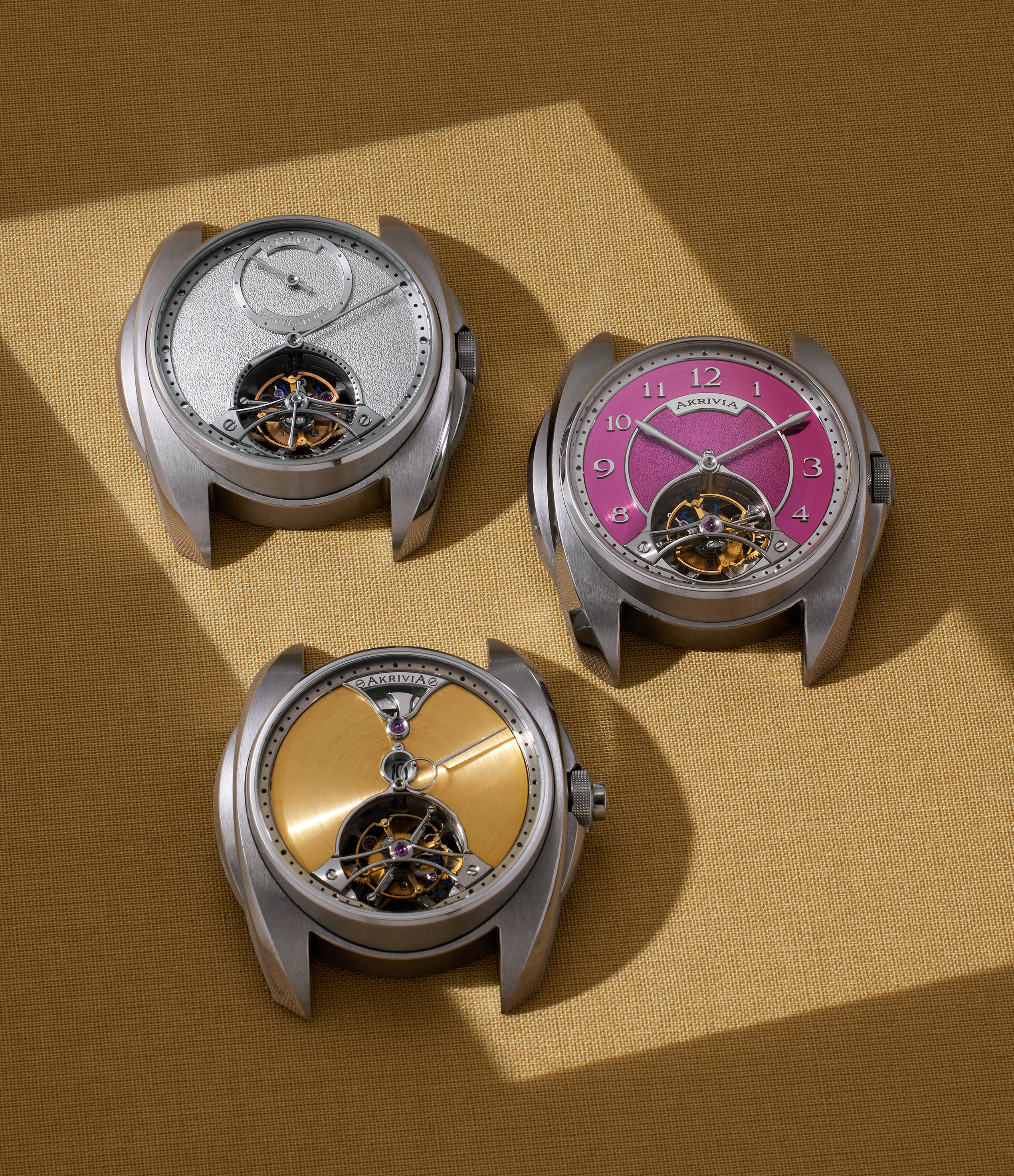



AK-01
In the midst of the busy Académie Horlogère des Créateurs Indépendants (AHCI) section of 2013’s Baselworld, Rexhepi and his business partner at the time, Etienne Deschamps, revealed the AK-01 Tourbillon Chronographe Monopoussoir. It was the first view the world got of Rexhepi’s watchmaking perspective. It was distinctive, bordering on the avant-garde, complicated and richly finished.
It was bold and of the era where watchmakers – from Grönefeld to Sarpaneva and Andreas Strehler to the McGonigle brothers – were testing the traditionally accepted boundaries of aesthetics as well as mechanics in the pursuit of highly individual visions of watchmaking. For Rexhepi, the AK-01 Tourbillon Chronographe Monopoussoir was the culmination of several elements of watchmaking he held in high regard.


Year:
2013
Case dimensions:
42.5mm x 12.9mm
Calibre:
AK-01
Power reserve:
100 hours
Complication:
monopusher chronograph
Production numbers:
12 each in stainless-steel, rose gold, and titanium.
Dial:
Matte polish
Calibre finishing:
German silver or brass decorated with Cotês de Genève, anglage, black polishing
The Calibre
Rexhepi says, “My favourite complication is the chronograph, so I wanted of course to feature [it] in my first watch. The tourbillon, I first encountered during my apprenticeship at Patek Philippe, when I was at the quality-control section of the manufacture… I said to myself, ‘One day I’d like to be able to make a tourbillon,’ but really, at that moment, it was a like a child’s wishful thinking.”


He encountered the regulating device again when working on BNB Concept’s tourbillon chronograph calibre. “I always found it to be magnificent because it actually showed off the mechanics of the chronograph on the dial side,” Rexhepi adds. Certainly ambitious, it followed in the tradition of young and ambitious watchmakers announcing themselves to the world by way of a watch that incorporated a tourbillon. However, the combination of a tourbillon and a mechanically dense complication such as the chronograph was one that few attempted.
When BNB Concept was liquidated, its assets, which included its calibres, were purchased by a concern named Manufacture Hautes Complications (MHC). Rexhepi continued to closely work with the owner of this organisation, Pierre Favre, offering his services when it came to prototyping and engineering movements.
The tourbillon, I first encountered during my apprenticeship at Patek Philippe… I said to myself, ‘One day I’d like to be able to make a tourbillon,’ but really, at that moment, it was a like a child’s wishful thinking.”
– Rexhep Rexhepi


Rexhepi designed a new cage for the flying tourbillon, made of titanium and steel, weighing just 0.45g. Inside the cage was a one-minute tourbillon and together with the cage, the whole structure comprised 63 parts. The escape wheel as well as the wheels of the horizontal clutch chronograph were redesigned too.
Of the changes to the ébauche, watchmaker and Rexhepi’s close confidant Franc Vila says, “Although the base was there, Rexhep redesigned the calibre so it worked. For instance, owing to the industrial finishing [of the ébauche], sometimes some wheels would not interact well with others, interrupting the drive train. He fine-tuned the level of the wheels and made changes to the architecture of the bridges to make everything work well together. The functioning was also helped by the finishing that modified the shapes of the parts.”
Seen without the dial, it is easy to appreciate both the symmetry of the architecture as well as the level of finishing – the two finger-shaped bridges anchoring the chronograph registers mirrored each other, and their skeletonised forms were decorated with beautifully finished internal angles.
Once the chronograph is engaged, power is transferred through the gear positioned at 4 o’clock for the functioning of the wheels of the complication. In adapting this movement, Rexhepi also integrated two snail-type gear trains that were designed by AKRIVIA. Through a single mainspring barrel, the calibre enjoyed a remarkable 100 hours of autonomy or around 70 hours with the chronograph engaged.
Aesthetics
Once he was happy with the calibre, Rexhepi designed the aesthetics around it. The chronograph column wheel, positioned at 12 o’clock, was made visible through a bell-shaped aperture on the dial side – almost a visual counterpart to a similarly formed aperture for the tourbillon cage. To further draw the connection, both stainless-steel frames were afforded the same mirror polishing that distinguished them from the rest of the dial. The twin chronograph registers at 10 and 2 o’clock also reinforced this symmetry. The aperture for the réserve de marche lay across from the one that put the horizontal clutch on display.
Earliest examples exhibited obvious hand-finishing on the dial side, whether it were the scales of the chronograph subsidiary registers, or the brand and “Swiss made” marks. Later in the series, these engravings became markedly more precise, presumably due to the employment of machine aids.


“The movement finishing was a way to differentiate myself, but it was also part of my education. I learned how to do this at Patek... For me, it was the only way.”
– Rexhep Rexhepi
Viewed through the sapphire caseback, the movement was classical and yet another place for the watchmaker to showcase his mastery of finishing. A large bridge spanned the northern half of the movement, anchoring the mainspring, with portions cut out to provide visual feedback when winding the movement but also to serve as a canvas for Rexhepi to show his skill with finishing inward angles. The edges of the bridges, with their flowing forms and sharp edges, were designed to show the watchmaker’s anglage capabilities, while the bridge anchoring the centre wheel was a canvas for his way with black polishing. Earliest examples bore slightly uneven engravings on the movement – this was evidence of the hand-finished nature of the execution. Despite this, we see the incredible attention to detail paid to all aspects of the watch – even so early on in the atelier's conception – that would be continued across the following series.
Rexhepi says that the finishing of his first watch was a special point of pride. “At this moment in watchmaking, [there were not] that many people who focused that much effort on movement decoration. You had Philippe Dufour, Romain Gauthier, Kari Voutilainen – that’s it. Movement finishing was a way to differentiate myself, but it was also part of my education. I learned how to do this at Patek and I couldn’t do watchmaking or the movement any differently. For me, it was the only way. You had to have beautiful wheels, countersinks, nice screws, Côtes de Genève, perlage.”
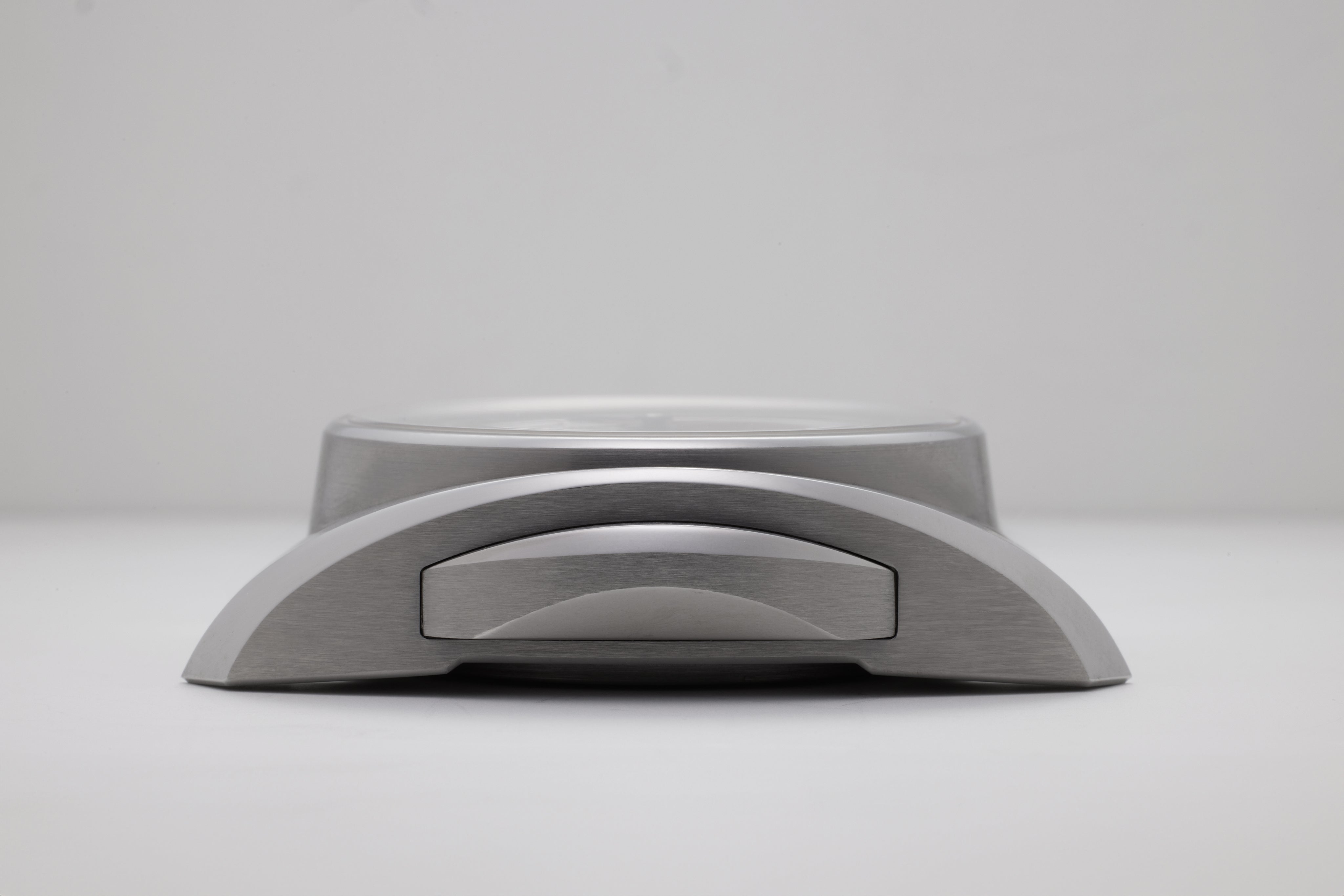

The Case
A sizeable 42.5mm across, the case was visually substantial and also complex – in fact it comprised 30 components. However, instead of all these elements compounding to exaggerate the overall proportions, we think they served to understate them. For instance, the two ear-like components on the flanks, U-shaped to mirror the curved down profile of the case itself, served to diminish its 12.9mm height.
This effect was also achieved with clever deployment of alternating finishes – the brushed surfaces of the case were interjected by mirror-polished chamfers that emphasised its tonneau form. It was the first instance where the watchmaker introduced the ovoid bezel, a subtle connection that remains even in watches produced much later in Rexhepi's story. While earliest examples featured a squared pusher on the flank, just north of the crown, this was quickly integrated into the crown. On the movement side, the case edge wore sharp facets, highlighting the level of detail that would come to define AKRIVIA.
Rexhepi says, “At this time, I wanted to respect tradition, and this is why the movement is very traditional, [in regard] to the finishing and other things. However, I felt it was important to bring a new design to the case, which nobody else really appreciated at the time. My goal was to create a case that is not round, that is not tonneau; it has a really different form, and you can see the construction clearly. I wanted it to be visually distinct and easily recognisable, even from a distance. It was a futuristic design, and some elements [such as] the bezel shape have remained part of the design language that can still be seen in the Chronomètre Contemporain.”
"It was important to bring a new design to the case, which nobody else really appreciated at the time."
– Rexhep Rexhepi
The brass dial was adorned with a kind of finishing Rexhepi refers to as “matte polish”. In the earliest days, there was no standardised dial offering, with clients welcome to choose a shade of their preference. As far as Rexhepi was concerned, this wasn’t a point of uniqueness. The chapters of the chronograph registers could be brushed or rhodium-finished, with the same finishing offered for the réserve de marche indicator. The “réserve de marche” could be spelt out along the curvature of the display or abbreviated to “IRM” (Indication Réserve de Marche). Chapters could be drilled or printed baton-style. AKRIVIA's take on sword hands could be had in two visual weights, with the option to heat-blue the stainless steel they were made from.
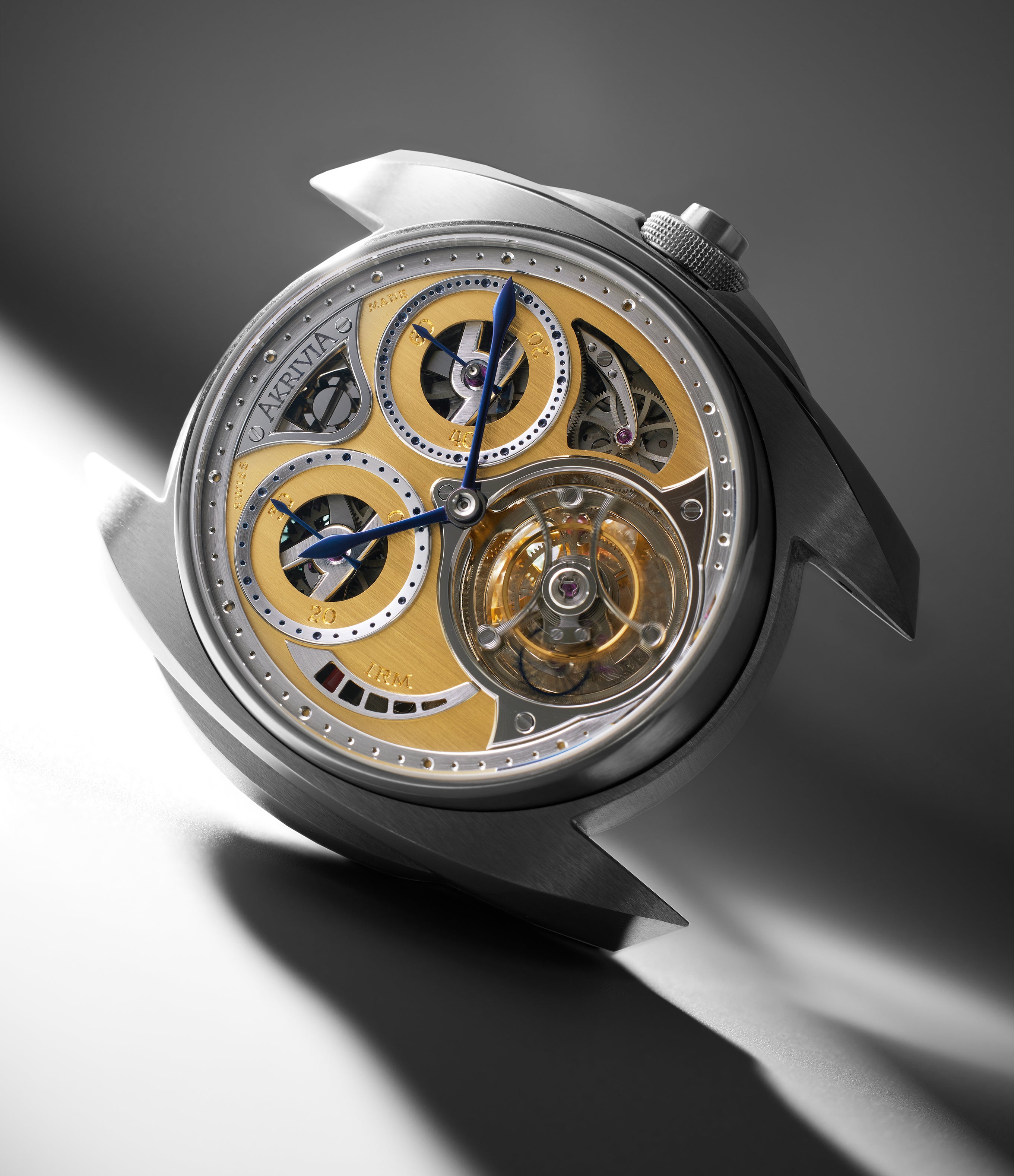

In Context
It is hard to overstate how elemental the design of the AK-01 Tourbillon Chronographe Monopoussoir would prove to be. While the partnership with Deschamp was short-lived, the complex case shape and construction of the first watch would endure in all watches that bore the AKRIVIA name. In fact, certain design elements, like the ovoid bezel, would even transcend over to the more classical form of Rexhep Rexhepi watches that would come later in the story.
AK-02
Simplification was on Rexhepi’s mind. While the AK-01 Tourbillon Chronographe Monopoussoir was positively received, it hadn’t created the ripples that the young watchmaker had expected.
In some ways we think the AK-02 Tourbillon Heure Minute, first seen in 2015, is the purer expression of the maker’s vision. Removing the complication allowed the complex form of the case to shine through, while eschewing almost all dial furniture provided a canvas to showcase craft. The calibre too, based on the same MHC ébauche, was lightened. Together, the AK-01 and AK-02 marked an emerging pattern in Rexhepi’s catalogue of first presenting a complicated version of a calibre and simplifying it in the subsequent watch.


Year:
2015
Case dimensions:
42.5mm x 12.9mm
Calibre:
AK-02
Power reserve:
100 hours
Complication:
Time-only
Case metals:
Stainless-steel, titanium and rose gold
Dials:
Hand-hammered and matte polished
The Calibre
Says Rexhepi, “I just wanted something very minimal and simple, highlighting the tourbillon because I still liked it. So, what are we focusing on? The minute hand and the tourbillon. We still have the same case because for me, it was important to retain the brand’s identity so it would be immediately recognisable from afar as an AKRIVIA.”


The case, produced in stainless-steel, remained unchanged in both its dimensions and appearance. The watch was also offered in titanium and rose gold. Viewed through the sapphire caseback, the calibre appeared the same in the form of the bridges as well as the fine finishing first seen in the AK-01. From this view, the only indication that this wasn’t the watch from last year was that in place of the sterile rim for the sapphire caseback, the AK-02 wore the word ‘tourbillon’ laser-engraved on it.
Through the process of simplification, Rexhepi further made the ébauche his own. The absence of the chronograph wheels and horizontal clutch made the architecture markedly cleaner. Beyond that, elements such as the large mainspring barrel (offering the same 100 hours of reserve) as well as the finely finished stainless steel cage for the flying tourbillon of Rexhepi’s own specifications, were retained.
The bridges, wearing beautiful Côtes de Genève and edges with fine anglage, revealed within their gaps a baseplate adorned with perlage. The texture was balanced with the mirror-polishing of the bridge anchoring the centre wheel. The visible wheels of the going train, golden in appearance, were richly detailed. Even smaller elements – such as screw countersinks and the click spring of the winding ratchet wheel – were afforded the same attention.
The Aesthetics
The dial, devoid of apertures and subsidiary registers, presented a blank canvas on which Rexhepi deployed two finishes, both marked by their basis in tradition. He says, “I applied matte polish. It’s made with stone powder and it’s an old technique of decoration.”
The option was between this and a hand-hammered texture. While in recent years this finish has once again found favour, especially with independent makers, it was much less common when the AK-02 was first revealed. It is also a finish that would remain in the AKRIVIA catalogue for several years. Best appreciated under magnification, it involves making indents on the dial by way of a burin and a hammer. While the tools are fairly rudimentary, it requires an even application of pressure to create a uniformly dimpled appearance. As a result, such dials often have to be created in one sitting, however long that may require. The effect is lustrous and unique.
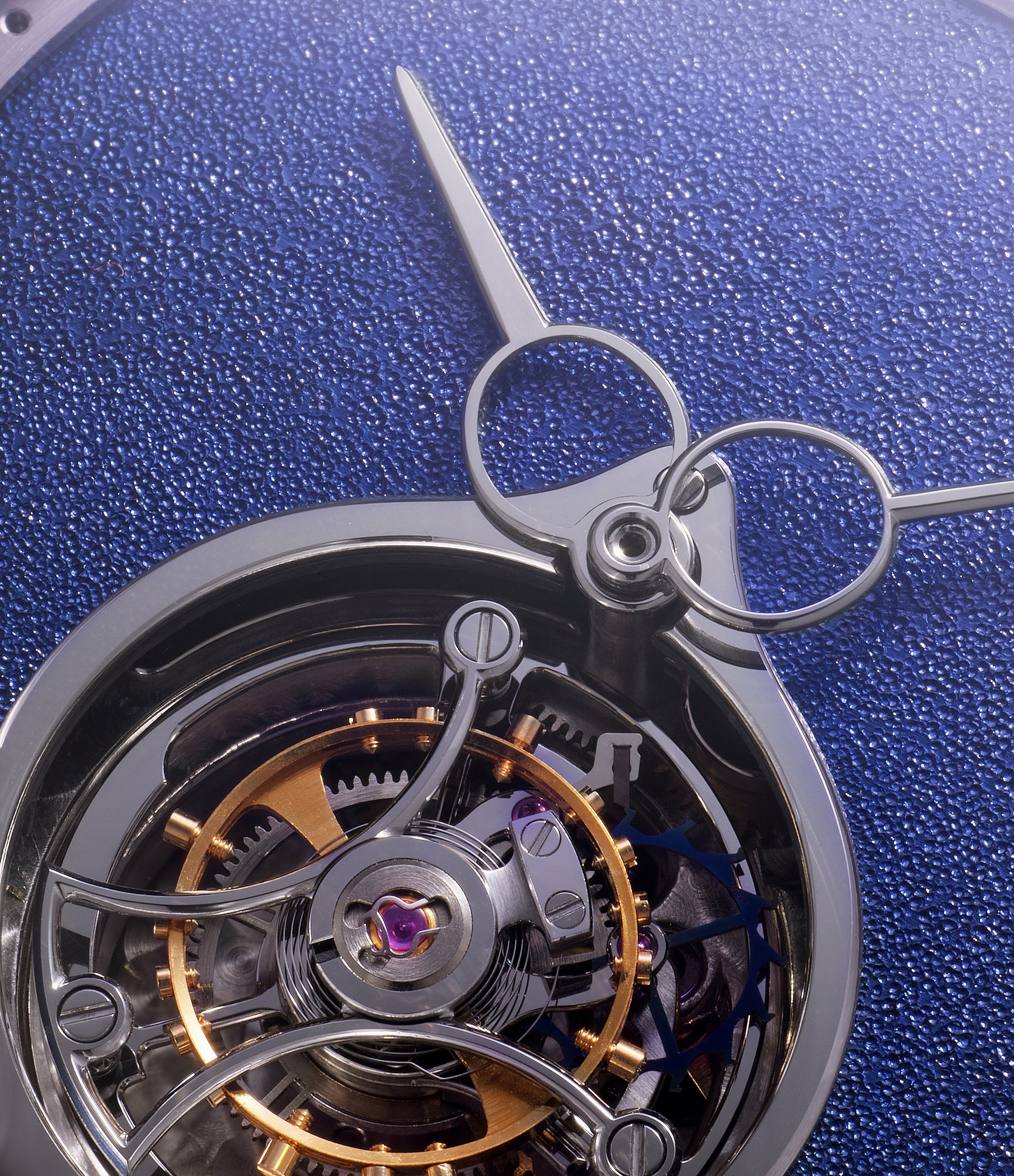

“We still have the same case because for me, it was important to retain the brand's identity so that it would be immediately recognisable from afar as an AKRIVIA.”
– Rexhep Rexhepi
The only constant on the dial is the drilled chapter of minutes that accompanied each piece. While most examples feature a cartouche closely aligned with the bezel at 12 o’clock bearing the AKRIVIA name, we have seen examples where this plaque is placed further down the dial. It is perhaps a result of the maker experimenting with the dial’s few elements.
Another area of variation was the hands. While the spade hands, first seen in the AK-01, were available in stainless steel or heat-blued, in two weights, there was a new set that hadn’t been seen before. They featured oval apertures at the base, echoing the form of the bezel. Beyond the oval form, were simple pointers. While somewhat incongruous to the design of the AK-02, in hindsight, they were the earliest indicator of the following year’s AK-03 that Rexhepi had clearly already been working on.
In Context
The AK-02’s greatest significance is perhaps that it revealed the mind of the watchmaker, far more complex than the watch itself was. It showcased an appreciation for traditional finishing, both on the dial and movement sides, but also the blueprint Rexhepi was working on for AKRIVIA. If the AK-01 was his way of announcing himself, the AK-02 is best viewed as the result of a period of reflection that allowed Rexhepi the space to create something that would be entirely of his own, in his very next offering.
AK-03
For his next piece, Rexhepi sought complications that rarely found favour in modern watchmaking. “Around 2014–15, no one was making a jump hour or watches with chiming complications, with the exception of Patek Philippe. In fact, exactly around that time the brand launched one,” says Rexhepi. The watch in question was the Patek Philippe Chiming Jump Hour Reference 5275P-001, one of a series of novelties that celebrated the brand’s 175th year in 2014.


Year:
2015
Case dimensions:
42.5mm x 12.9mm
Calibre:
AK-03
Power reserve:
100 hours
Complication:
Jump hour and Sonnerie au passage
Case metal:
Stainless-steel
Calibre finishing:
German silver finished with Côtes de Genève, anglage, 56 inward-polished angles
Dial finish:
Grey and brushed gold
Production number: 3
The Calibre
Rexhepi had started working on the AK-03 calibre in the early days of AKRIVIA's story in 2013. Composed of 275 components, the movement was designed so all information – the chiming function, hour aperture and one-minute tourbillon – was arranged in a linear fashion.
Viewed through the caseback, we begin to see the earliest examples of Rexhepi’s desire for symmetry taking root. Dominating the view was an expansive, bat-shaped mainspring bridge with billowing curves giving way to sharp angles. It was finished with beautiful Côtes de Genève, while the edges featured elegant anglage. The large, single barrel underneath provided the calibre 100 hours of autonomy.


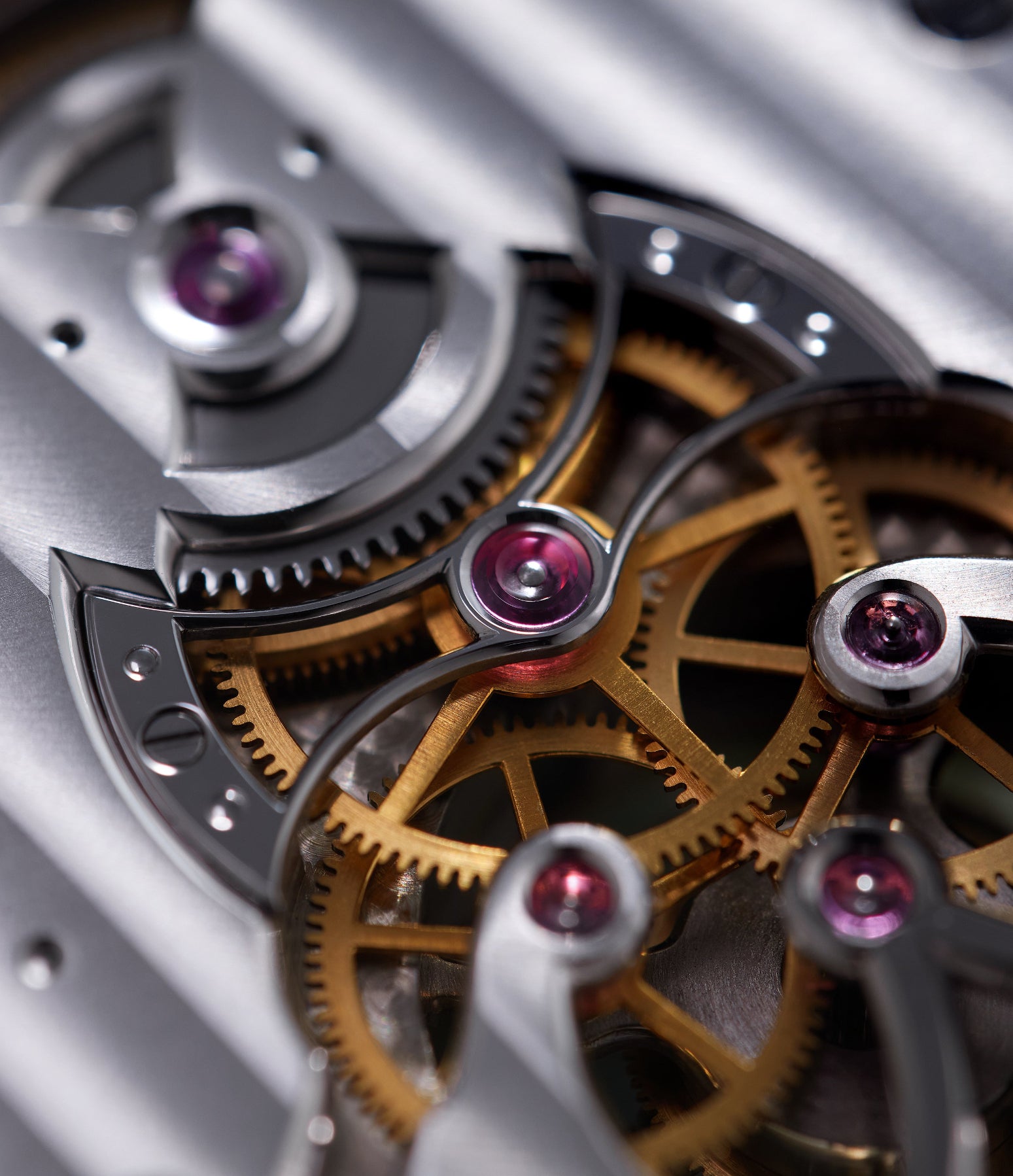

Nestled within the shape of the mainspring bridge was another skeletonised, bat-shaped bridge that anchored the centre wheel of the going train. The bridge was skeletonised to not only further visibility but also to showcase the rounded polibercé finishing Rexhepi had been honing. It featured eight interior angles – the same number as the mainspring bridge – with each one finished expertly.
Directly beneath the mainspring and centre wheel lay the tourbillon, visible on the dial side. This arrangement meant that the third wheel of the going train had to be moved to one side of this straight line. To preserve the symmetry, Rexhepi made the decision to include an additional third wheel on the other side. This wheel did not interact with the calibre in any meaningful way but was purely for aesthetic reasons. Each of the third wheels was anchored by independent bridges, together flanking the skeletonised triangular one holding the tourbillon in place. In between the bridges, the perlage that adorned the baseplate was visible. The overlap of wheels and the symmetry of the setup are satisfying, while the fine decoration furthers the visual feast.
The tonneau case, with all its complexity, remained unchanged. The only distinction was that where the pusher – integrated into the finely knurled crown – served to engage the chronograph in the AK-01, in the AK-03 its purpose was to silence or make audible the chiming function. When silenced, a lever engraved with a muted bell icon, blocked the hammer from striking the gong.
The Dial
The movement side view, while a study in fine Swiss finishing, bore almost no indication of the complications that lay within. This was reserved for the dial side. Where the bell-shaped aperture on the AK-01 displayed the chronograph column wheel, in the AK-03 it displayed the high-polished hammer that struck a gong at the top of the hour to indicate the passage of time. “This has always been my visual code – to highlight the component that characterised the complication in the watch,” says Rexhepi. This aperture, topped with a jewel, was mirrored by the larger aperture for the tourbillon, with the time display atop it.
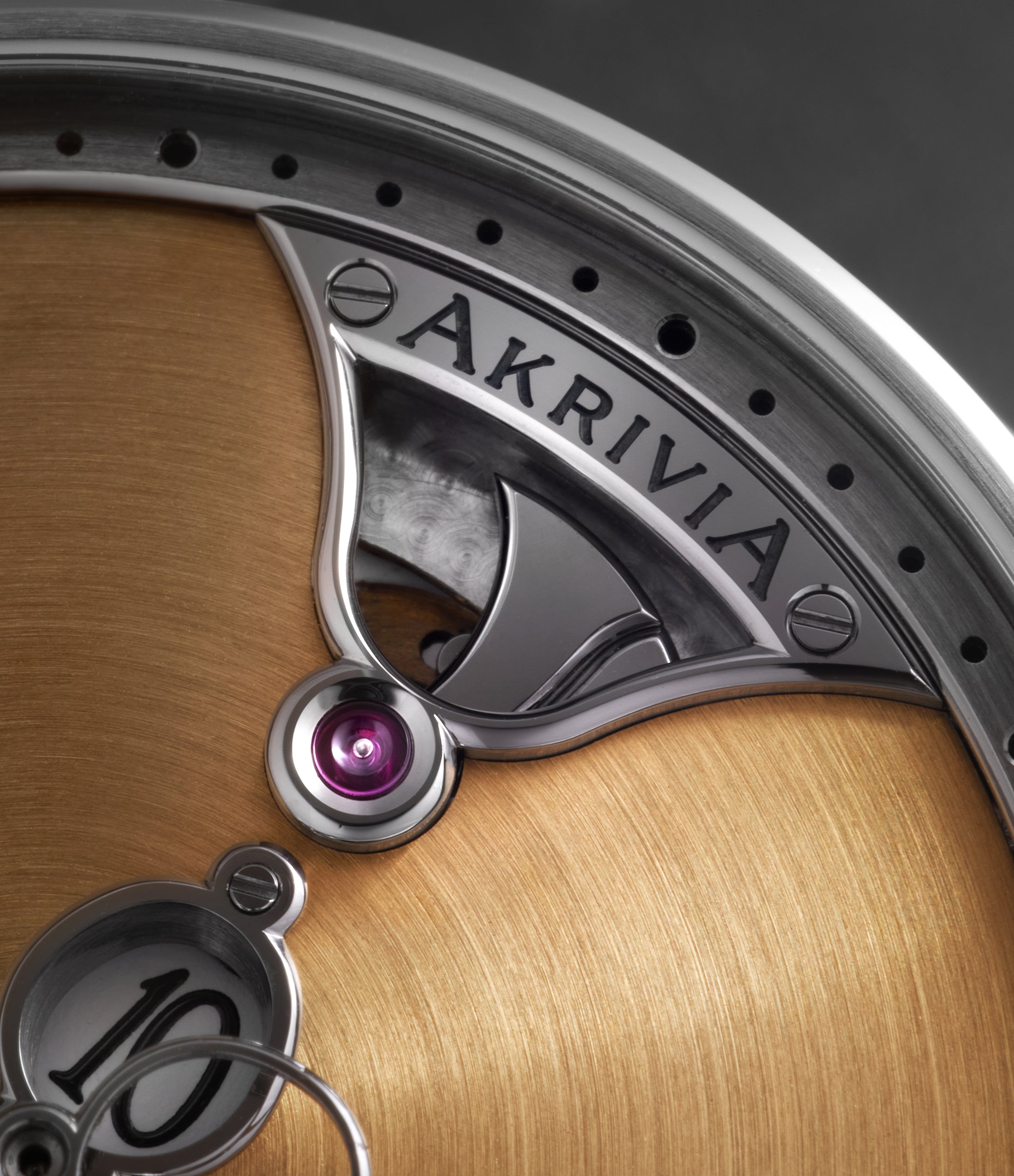

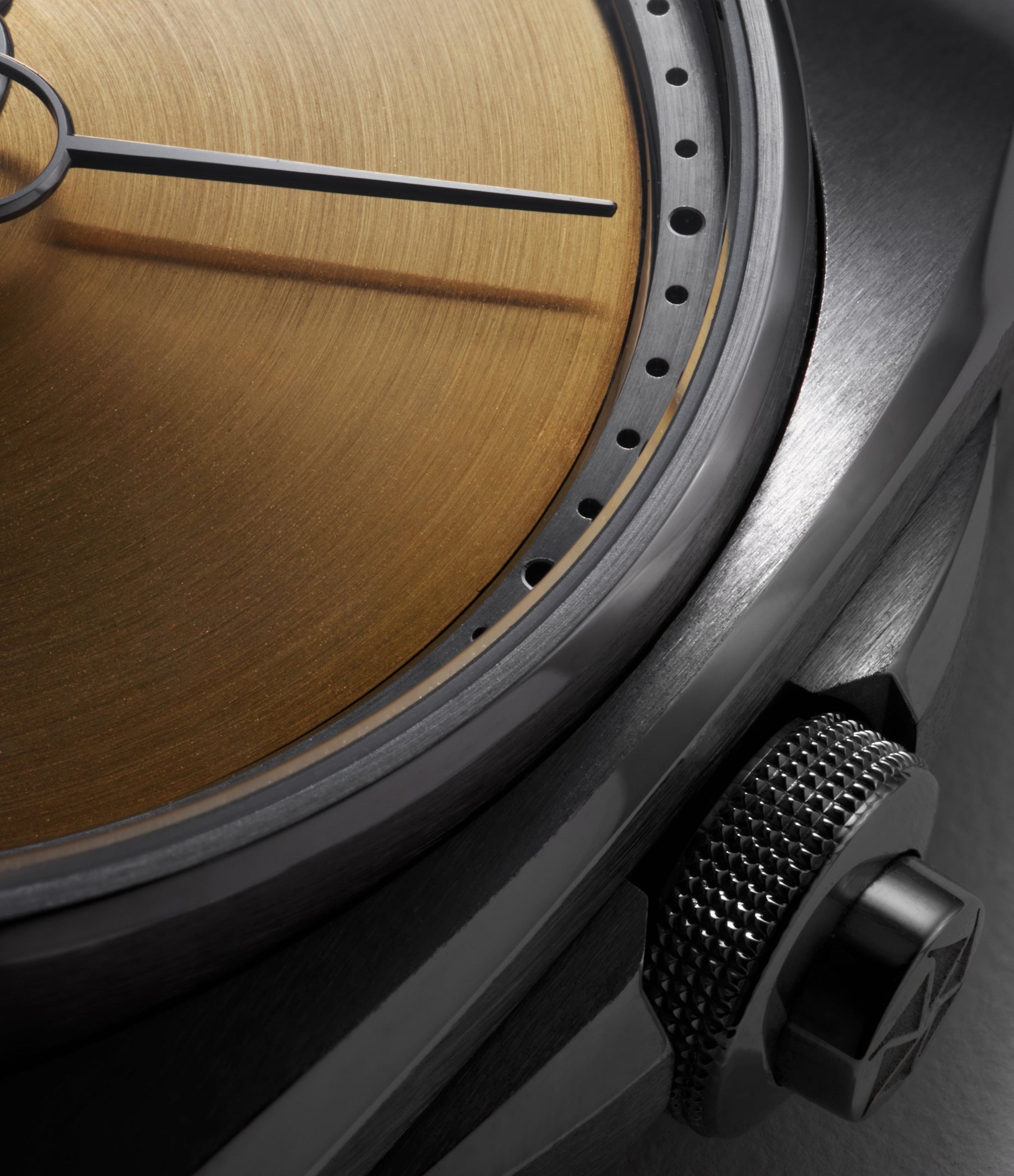

“I came to the jump hour, which is of course well established in watchmaking, and also met my need for minimalism. I like tourbillons so I had to retain that. And then there was a chime. You could see in the watch that I was young and eager to show everyone that I could do it, to show that you’re strong, you’ve got muscles.”
– Rexhep Rexhepi
The digital hour display disk lay far beneath the dial, seemingly on a similar plane as the gong and the golden balance wheel at the heart of the tourbillon. The solitary minutes hand with a round aperture, first seen in the AK- 02, suddenly began to make perfect sense. The aperture corresponded with that of the hour display, not blocking its view, which was especially useful at the top of the hour.
Instead of the flying variety in previous watches, straddling the aperture for the 13.7mm-wide tourbillon was a twin-armed bridge, again formed like a bat’s wings. This too was skeletonised and tied together the aesthetic on the dial and movement side. This bridge wears polibercé finishing, as do the arms of the tourbillon carriage. The Quadriskell balance wheel, new to the AK-03, featured four weights or inertia blocks. Oscillating at 21,600 vibrations per hour, it featured a Breguet overcoil and Swiss lever escapement, blued for visual distinction.
In terms of finishing, the exceedingly smaller number that have been produced have either featured the maker’s signature matte polish – this time in a circular grained pattern – or a more muted grey dial.
In Context
While this was obviously one of the most consequential pieces in AKRIVIA's history thus far, Rexhepi was never entirely happy with the way the calibre functioned. He says, “I realised that I could do better. I launched it and we made three watches, but after these three deliveries I stopped the project because the sonnerie was not good enough and it was a little too complex. I decided that when the opportunity arose, I would rebuild the movement. So, this is what I did in 2021.”
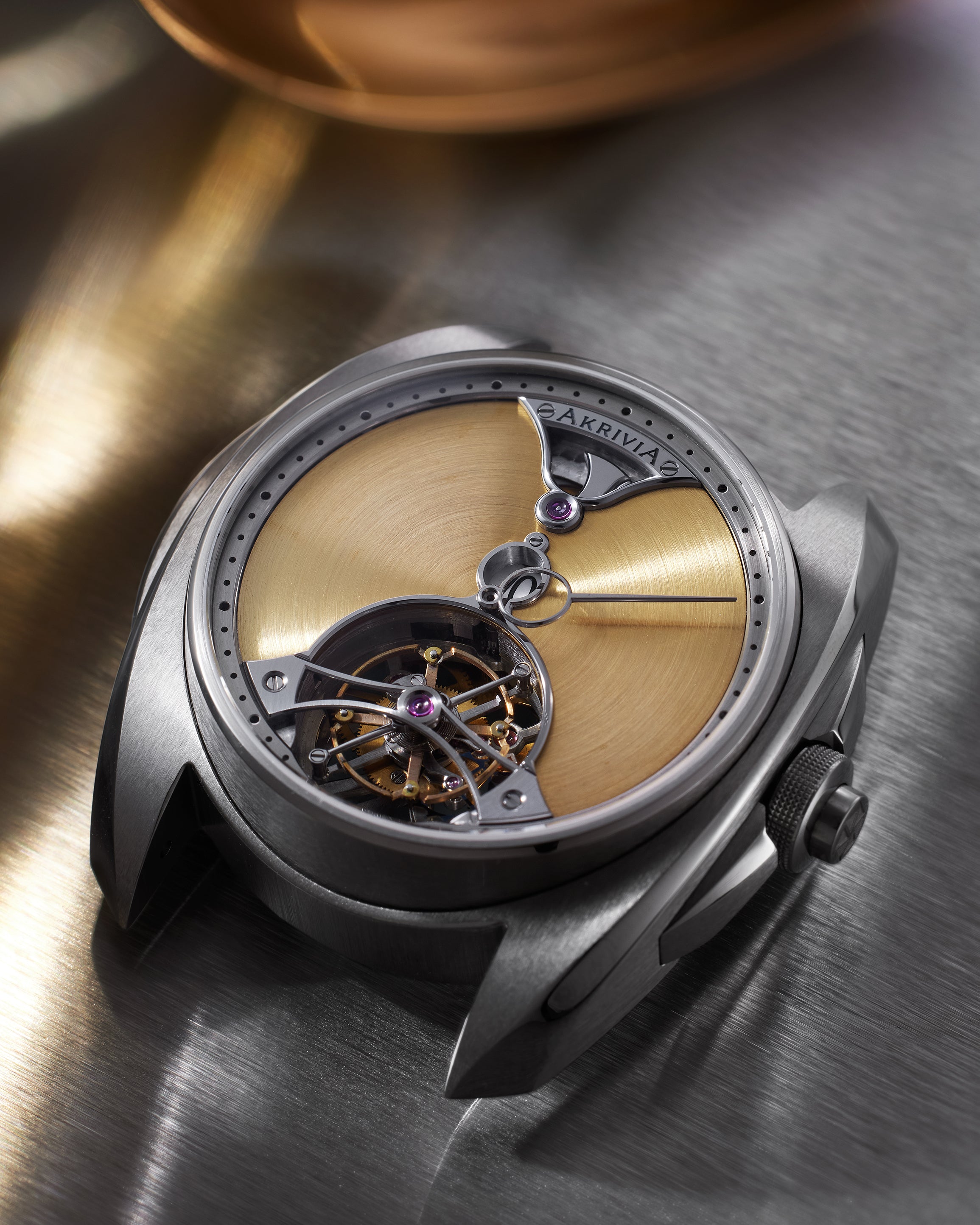

Back then, around 2015, there weren't any young guys who were starting out with a watch like the AK-03. While it wasn’t that long ago, less than 10 years in fact, it really was a different era.”
– Rexhep Rexhepi
Despite its shortcomings, the AK-03 established several milestones. The first in-house calibre provided further proof of the skill Rexhep possessed, while its symmetrical layout would be a recurring motif in almost every watch and calibre that would come after it. The small number of pieces, understandably elusive, have become part of the early AKRIVIA legend, even though this was still the era when Rexhepi’s watches found appreciation among only a small set of enthusiasts.
It laid the path for what would become an increasingly self-sufficient atelier in the years to come. The first watchmaker joined in 2016, followed by an engineer and Rexhepi's brother, Xhevdet. Eventually, the atelier would go on to include around 10 watchmakers and four engineers.
AK-04
Also first seen in 2015, a logical companion piece to the AK-03 Tourbillon Chiming Jump Hour was the AK-04 Tourbillon Régulateur. They both benefited from the same in-house calibre. However, the latter does without the sonnerie complication. Beyond that, the two watches had more in common than what set them apart. This mirrored AKRIVIA's trajectory of following a complicated piece with a time-only iteration, even though in the case of the AK-03 and AK-04 the watches were released concurrently.


Year:
2015
Case dimensions:
42.5mm x 11.5mm
Calibre:
Modified AK-03
Power reserve:
100 hours
Complication:
Time-only
Case metal:
Stainless-steel
Calibre finishing: German silver decorated with Côtes de Genève, anglage, 50 inward angles, perlage, black polishing, polibercé finishing
Dial finishing:
Matte polished, blued steel, hand-hammered
The Calibre
It represented a most sensible way to widen the catalogue, a goal that Rexhepi had nurtured since his time at F. P. Journe. Even though the AK-04 was a simplification of the calibre, down from 275 components to 229, and devoid of a complication, it presented another traditional time display that had perhaps fallen out of favour in the modern era.
When asked about the idea behind the design of the AK-04, Rexhepi says, “The Régulateur had the same base as the Chiming Jump Hour, and I had been thinking about a regulateur dial as far back as 2013 when I started working on this calibre. It had its basis in traditional clockmaking and chronometry. It then came down to adapting the movement to meet the regulator layout and designing new hands appropriate for the set up. The hour hand is placed at 12 o’clock, the large minutes stay at the centre and we can view the seconds through the one-minute tourbillon.”
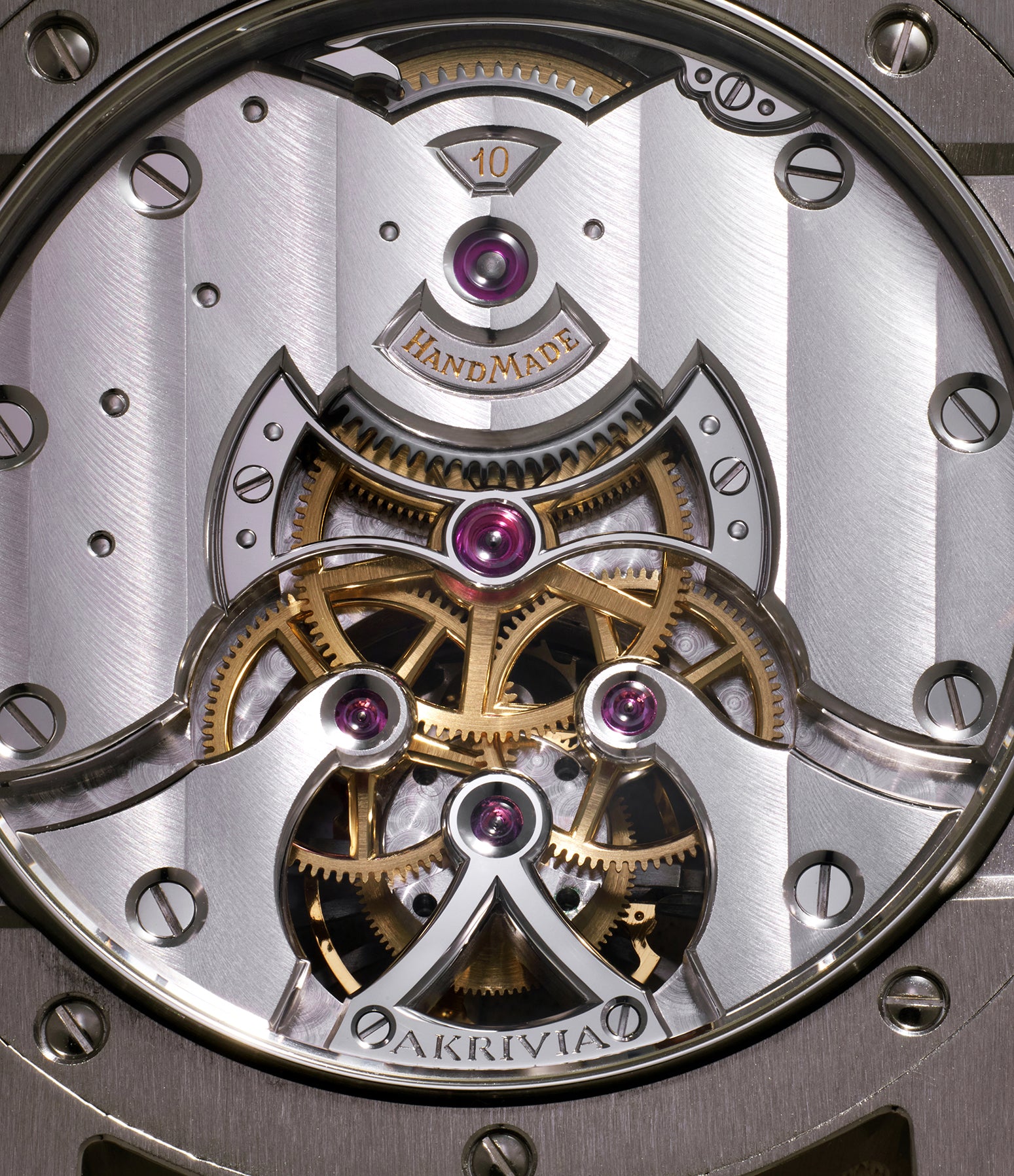

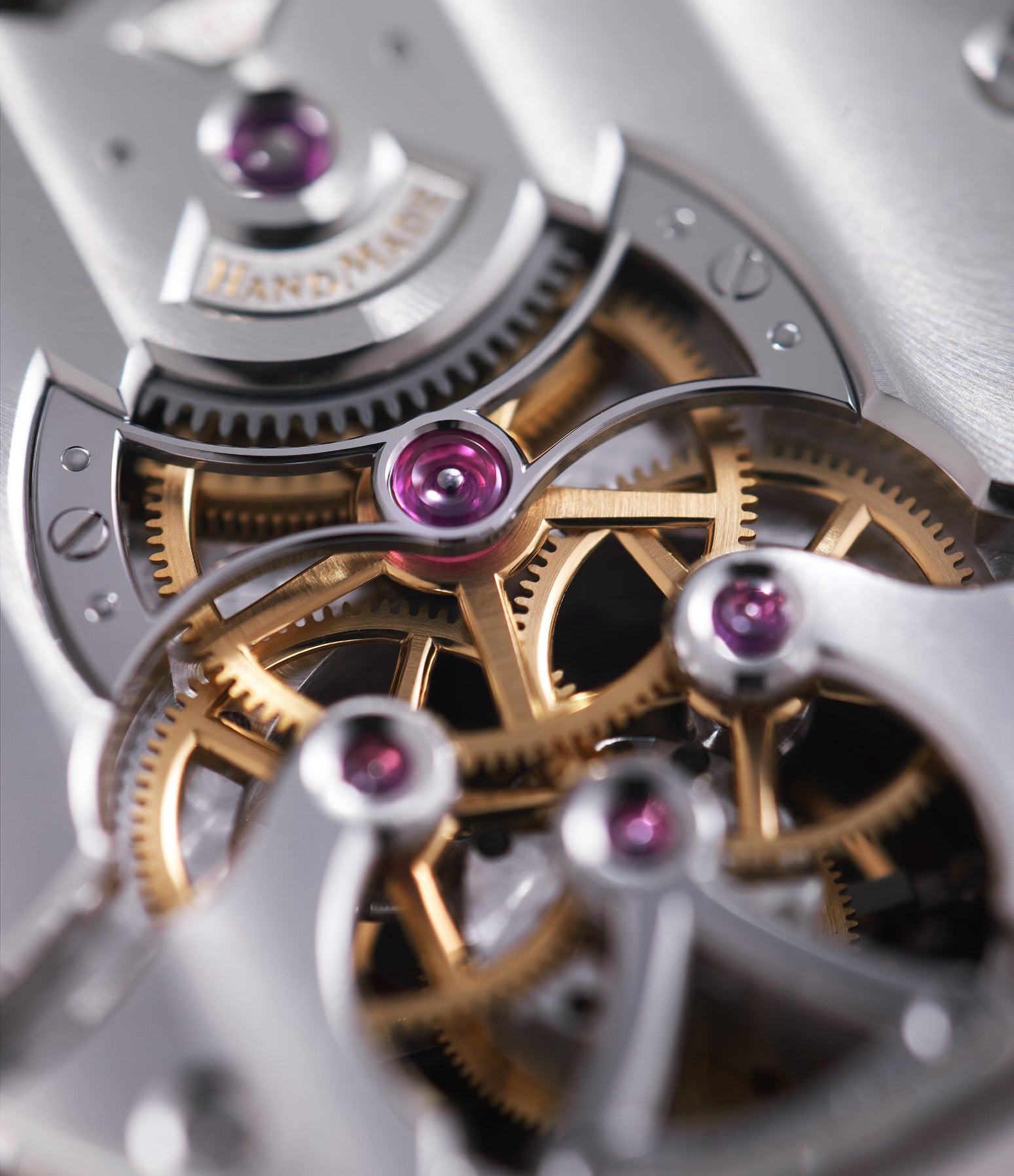

“As soon as I started making in-house movements, you can see the symmetry. It’s one of my strongest codes.”
– Rexhep Rexhepi
Visually unchanged, it wore the same bridge-within-bridge layout of the AK-03, with the Côtes de Genève on the mainspring bridge contrasted by the black polishing on the bridge holding the centre wheel. While aesthetically similar, it was much lighter because of the components lost due to the lack of a complication. Notably, the one-minute tourbillon benefited from being crowned with a seconds hand on its bat-shaped bridge – a clever inclusion that added functionality to an existing quality of the tourbillon.
The Dial
Corresponding to the addition of a seconds hand, the bell-shaped aperture of the tourbillon was outfitted with a drilled seconds chapter. The display of time was, much like the AK-03, still laid out linearly. A brushed ring, with a drilled chapter of hours with the words “AKRIVIA” and “Regulateur” across from each other, formed the subsidiary hour register. Just south of that was the large minutes hand that swept the face, displaying the minutes on the main drilled chapter. The new hands iterated on the spade-tipped examples from previous watches, and their weight corresponded to their display – the hour hand was shorter and thicker, the minutes hand comparatively finer, while the seconds hand was the lightest. They were all beautifully detailed, especially the countersunk bases, with precise anglage even on the miniscule canvas of the seconds hand.
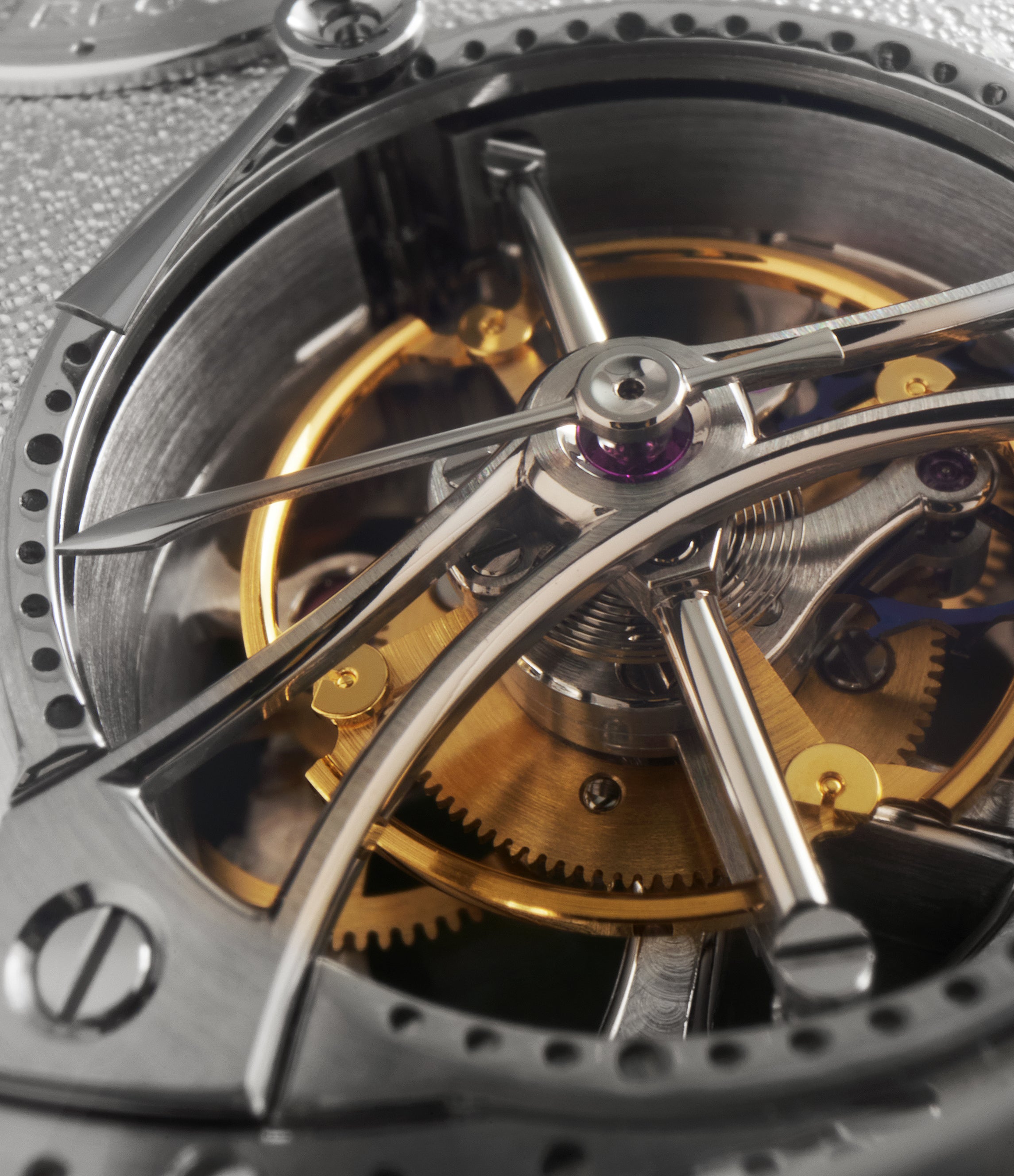



While the layout wasn’t novel, it certainly benefited from Rexhepi’s aesthetic sense in the AK-04. The dial could be had with a hand-hammered detail or with matte polishing. Also offered for the first time was a new, attractive blued-steel finish. The dial and colour of hands could be customised based on personal preference. While this means that there are several examples unique in their configuration, Rexhepi never viewed these as such.
In Context
Despite its proximity to the AK-03, the AK-04 Tourbillon Régulateur is distinct within the AKRIVIA family of references, owing to its time display that furthered Rexhepi’s desire for visual symmetry.
It remains coveted because it housed AKRIVIA's first in-house calibre, which showed the lengths Rexhepi would go to achieve the aesthetics he wanted for his watches. Its lack of complication and simplified mechanics has proven to be a timeless combination.
AK-05
Three years into his story as an independent, Rexhepi had resolutely pursued his particular vision of watchmaking, melding traditional complications and time displays with an avant-garde case in a way that showcased his aesthetic preference for symmetry and fine finishing. He had produced complicated pieces as well as time-only examples and starting with the AK-03, he even had a calibre of his own.
While his watchmaking had begun to find favour within the still small independent scene of 2016, like anyone who has put their name to anything, he had moments of doubt. He sought the advice of his global network of clients as well as the retail partners he had been working with to gauge the prevailing sensibilities of the day, hoping to tailor his offering to meet them.


Year:
2016
Case dimensions:
42.5mm x 11.5mm
Calibre:
AK-05
Power reserve:
100 hours
Complication:
Time-only
Case metal:
Stainless-steel
Calibre finishing:
German silver decorated with Côtes de Genève, black polishing, anglage, 69 inward-polished angles, polibercé polishing
Dial:
Hand-hammered and brushed
The Dial
It is this period of his journey that yielded the AK-05 Barrette Miroir. First seen in 2016, it was the most visually conventional of all the watches Rexhepi had created up to that point. The familiar drilled chapter of minutes held within it an incomplete chapter of Arabic numerals, generally applied, but possibly engraved, depending on clients’ preferences. The brand mark was incorporated within a ring, black-polished and with sharp-angled edges, with the same treatment applied to the curvature of the bell-shaped aperture of the tourbillon. Inside was a hand-hammered central section.


However, Rexhepi hadn’t strayed from his vision of watchmaking due to a change in vision. The standards he wanted to hold himself to, and his singular vision of watchmaking, were proving to be difficult business models. “It was really difficult to just survive. It’s as if I had a knife to my throat and I had no opportunity to think about whether what I was doing was healthy for my vision of watchmaking.”
While obviously a difficult period, he credits it with birthing his next generation of watches. “I’m not afraid of failure,” Rexhepi says. “That’s part of life and that’s what makes you think and be creative. It’s what shapes you. It pushes you to your limits.”
“My idea was to create something similar to the AK-02, which was, of course, based on an existing movement, but this time with my own tourbillon. However, it was the watch for which I listened to people the most. The end result, while beautiful and more popular and in demand, wasn’t really me.”
– Rexhep Rexhepi


The Calibre
The conventional, two-hand time display meant that the calibre, the same base as the AK-03, was even further simplified. Its 167 components represented a significant streamlining, even on the AK-04’s calibre. It would also be the last piece of the AK series to feature a tourbillon.
Visible through a proportionally larger aperture on the dial side, the marginally larger tourbillon cage measured 13.8mm across, while in both the AK-03 and AK-04, the cage measured 13.7mm in diameter. The new cage, composed of 63 components, had at its heart the 10.5mm Qadriskell balance wheel with four weights, that was of Rexhepi’s design. It utilised a Breguet overcoil. The wheel was hand-bevelled while the escapement wheel was blued, as in the previous two generations of watches that featured variations of this tourbillon. Similarly, topping the cage was the bridge finished with rounded polibercé polishing. Supporting the cage was the bat-shaped bridge, with beautiful, bevelled details. The name “Barrette” is a reference to its arched shape.
On the movement side, while keeping the basic architecture similar to that of the AK-04, Rexhepi redesigned all the bridges. The mainspring bridge was almost M-shaped, with billowing edges that came to sharp points. In place of the bat-shaped centre-wheel bridge was a flowing ribbon of stainless steel, anchoring both the centre and the third wheel of the going train. This bridge, black polished, was responsible for the “miroir” part of the name.
Noticeably absent was the second “third” wheel of previous watches, with the shapes of the bridges designed to compensate for this lack of symmetry. A large bridge, with a wave-like form, was topped with a black-polished component to support the tourbillon. This detail was replicated in a similarly finished component on the bridge supporting the mainspring. The extensive application of black polishing was extended to the screws as well, more than earning the watch its name.
Aside from the black polishing, the bridges were finished with an ever-improving style of Côtes de Genève and the sort of anglage and fine inward angles the watchmaker had become renowned for.
This dial and movement were paired with the 30-part 42.5mm case available in stainless steel, titanium and rose gold. This would also be the last outing for this first-generation complex AKRIVIA case.
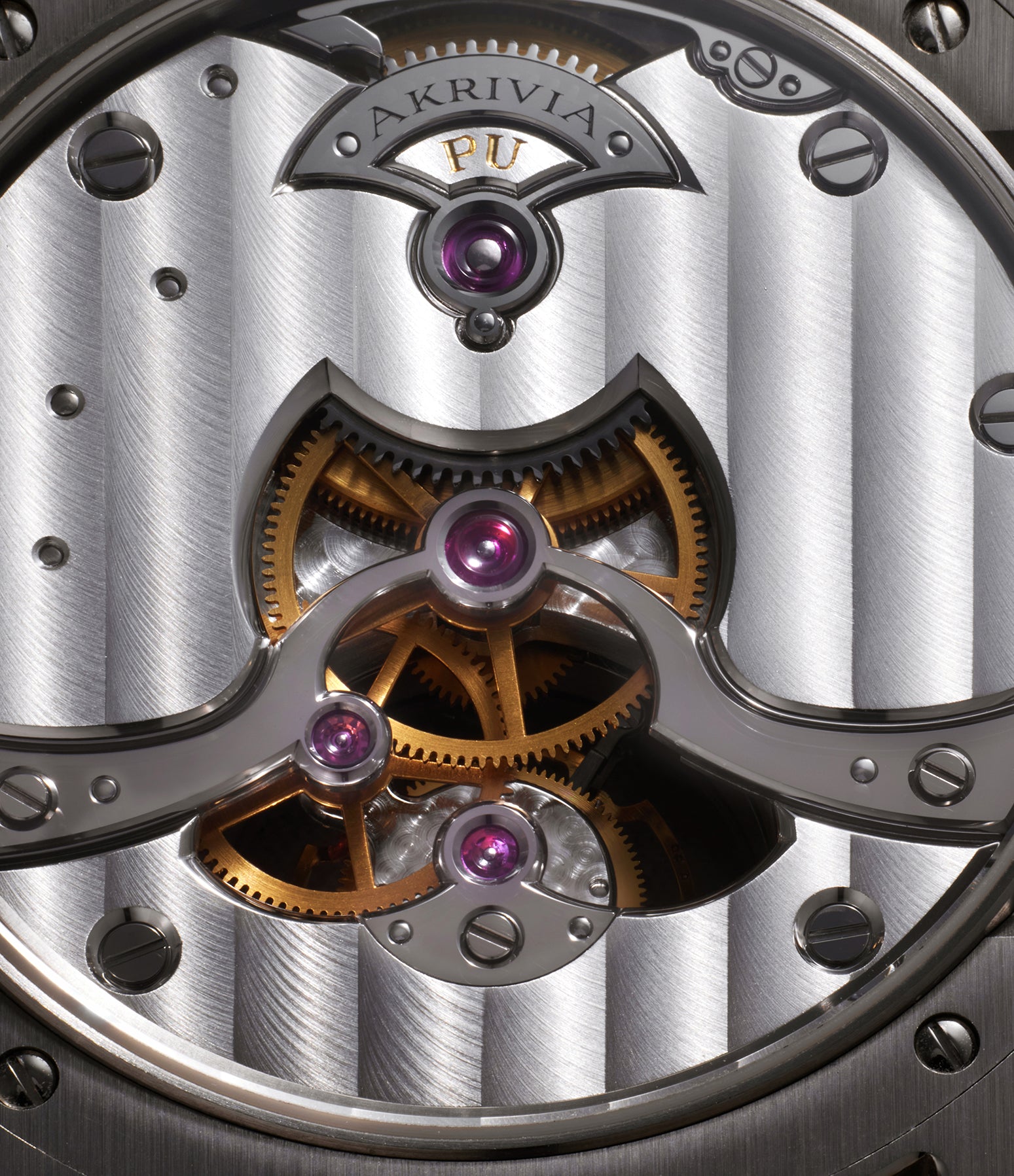

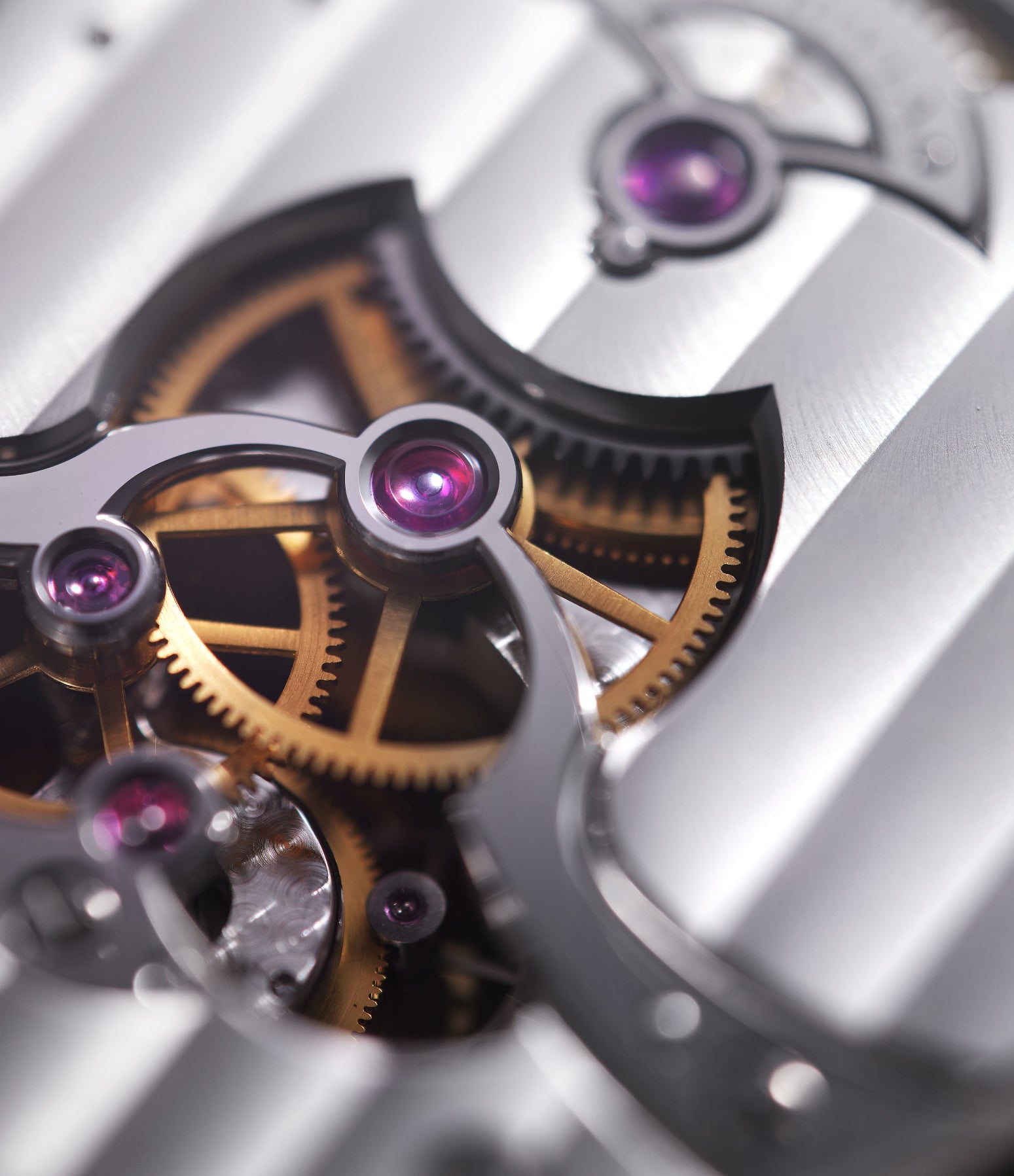

In Context
Its simplicity perhaps belies just how crucial the AK-05 Barrette Miroir was. The most aesthetically conventional of Rexhepi’s pieces so far, it was a watch that resulted from many conversations he had with his clients as well as retail partners. It is perhaps for this reason that it looked so different from the watches he had created previously.
“It was a matter of either doing what was necessary or the dream is dead and you’re in debt for life.”
– Rexhep Rexhepi
AK-06
It would be fair to characterise Rexhepi’s career up until this point as one marked by the intensity of a man in a hurry to reach a goal. It was the driving force behind the five novelties he had created in the first four years as an independent.
The truth is the watchmaker was struggling. His aesthetic, while singular, had not achieved the success he had hoped for and consequently he was increasingly finding himself financially stretched. Rexhepi says, “I was so frustrated. Honestly, I was putting everything into this watch and if it didn’t work, I thought I would stop everything and do something else… The AK-06 was like a revival.”
This underlines the importance of the watch. When it was revealed in 2017, the AK-06 represented a clear break from the past. Among the key differences was the lack of a tourbillon, a first for AKRIVIA. The case, while retaining the aesthetic language, was radically simplified and its proportions shrunk. Its open layout brought the symmetry previously seen on the movement on to the dial side as well. Like the AK-05 Barrette Miroir, Rexhepi had extensively consulted with retail partners about the shape this watch should take. However, while the previous watch supplanted some of that input on to the existing AKRIVIA aesthetic, we think the AK-06 represented a more meaningful reimagining.


Year:
2017
Case dimensions:
41.5mm x 9.9mm
Calibre: AK-06
Power reserve: 100 hours
Complication: Zero-second reset and power reserve indicator
Case metals: Stainless-steel and titanium
Dial finish:
Grey, rhodium-plated baseplate; grey, hand-hammered rhodium-plated baseplate; and yellow gold-plated, hand-hammered brass baseplate
Calibre finishing:
German silver or brass with yellow gold gilt or rhodium finishing with Côtes de Genève, anglage, polibercé polishing, black polishing and perlage
The Calibre and Aesthetics
Rexhepi, keenly aware of the limitations of his skeletal organisation at the time, knew the new movement he was designing had to be simple. The new AK-06 calibre would be time-only, and for the first time make the 100 hours of reserve the mainspring delivered central to its offering. This was of course thanks to the large mainspring barrel framed by a sizeable bridge, cut out to perfectly meet the form of the wheels of the going train. Certainly reminiscent of previous calibres created in-house, there were some key architectural distinctions.
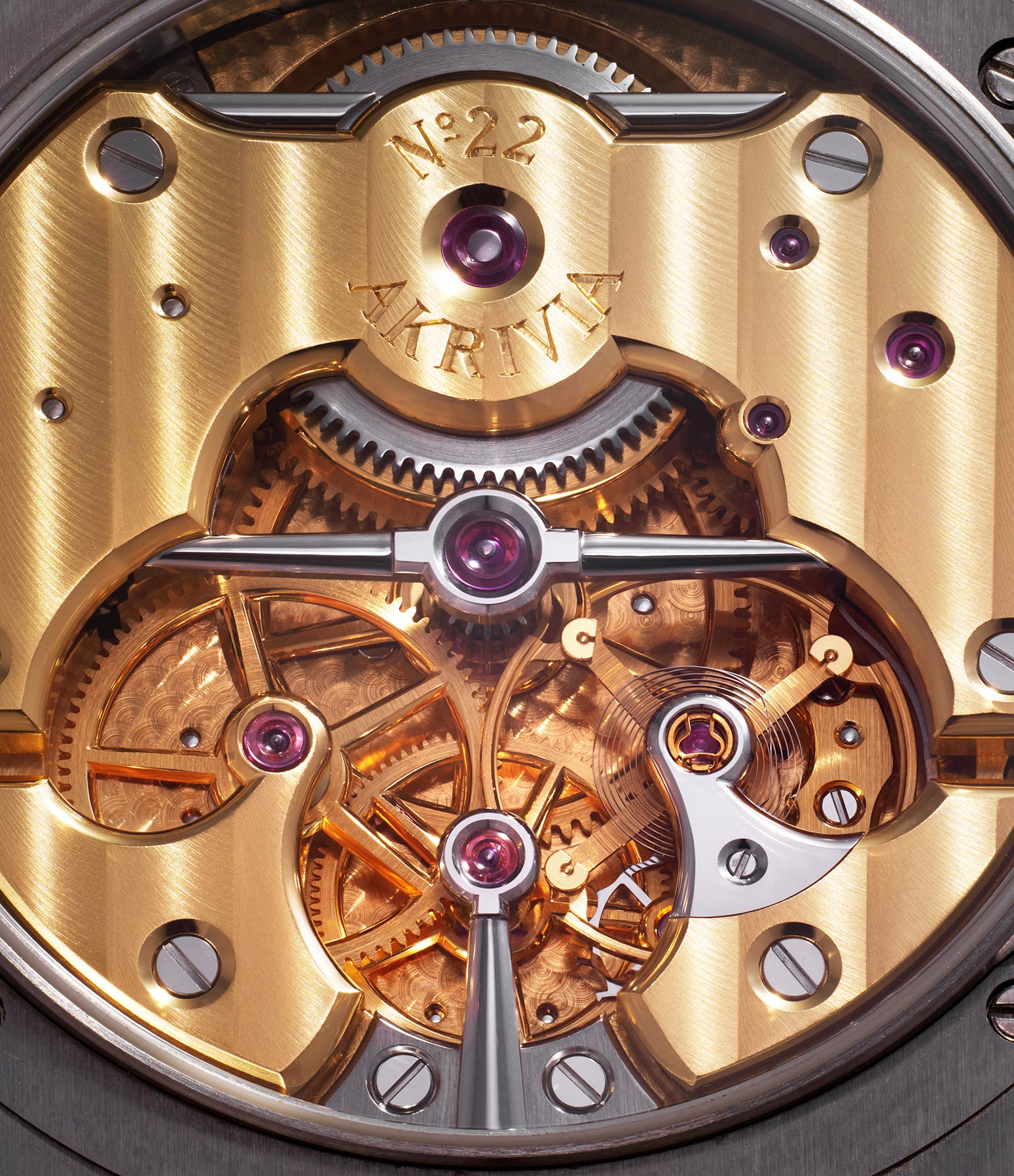



The central wheel was anchored by a bridge with a rounded profile, while the balance wheel was on the right-hand side of the calibre, made distinct by the black polished tip of the bridge that held it in place. Together with the other wheels of the going train, the layout achieved the meticulous symmetry that is a key visual point of AKRIVIA. This carried on to the dial side, where components of the keyless works, reserve indicator and zero-second reset were purposefully laid out on this side of the baseplate.
The calibre, triple-tiered in layout, was finished either in yellow-gold gilt or rhodium to correspond with the shade of the dial. This was perhaps logical for a watch whose aesthetics blurred the lines between the two sides of the watch.
The Côtes de Genève that adorned the bridges on the upper level contrasted against the polibercé polishing on the centre wheel bridge as well as on the second wheel of the drive train, located on the second level of the arrangement. The symmetry achieved by placing the balance wheel to one side meant Rexhepi could do without the ornamental second “third” wheel last seen in the AK-04. The golden wheels feature incredibly uniform inward angles mirror-polished by hand to contrast with the brushed texture on top. The quality of finishing on the inner angles of the wheels, a time- and skill-intensive process, marked a significant upgrade from previous generations. A wider variant of such anglage also adorned the edges of all bridges, their even application holding up against even microscopic scrutiny. The black polishing on the edge of the balance bridge as well as on the flathead screws provided another finishing detail to consider. On the lowest level, the baseplate wore perlage.
“I said we’re going to redevelop. I took off the tourbillon, highlighted the power reserve and did some martelage. It’s a combination of my style but presented differently. You’ve got a bit of Breguet Marie-Antoinette inspiration in that you can see all the components on the dial side. The AK-06 is like a revival."
– Rexhep Rexhepi
On the dial side, the circular power-reserve indicator at 12 o’clock was flanked on either side by the two toothed racks that governed the complication. The one on the left hand side operated with a set of gears at 9 o'clock. Coupled with the mainspring, it advanced the reserve indicator as the movement was wound up. A near identical rack on the right of the reserve indicator, with a blued spring coil at its base, acquired tension during this action. The right rack used this spring tension to push the reserve indicator back to 0 as the mainspring was spent over the course of the 100 hours of reserve. While certainly useful when paired with a manually wound calibre, the decision to make the power reserve indicator and its underlying mechanics such a visually dominant aspect of the dial was a novel one. The dance of the cams added entertaining visual feedback to the mundane task of winding the watch.
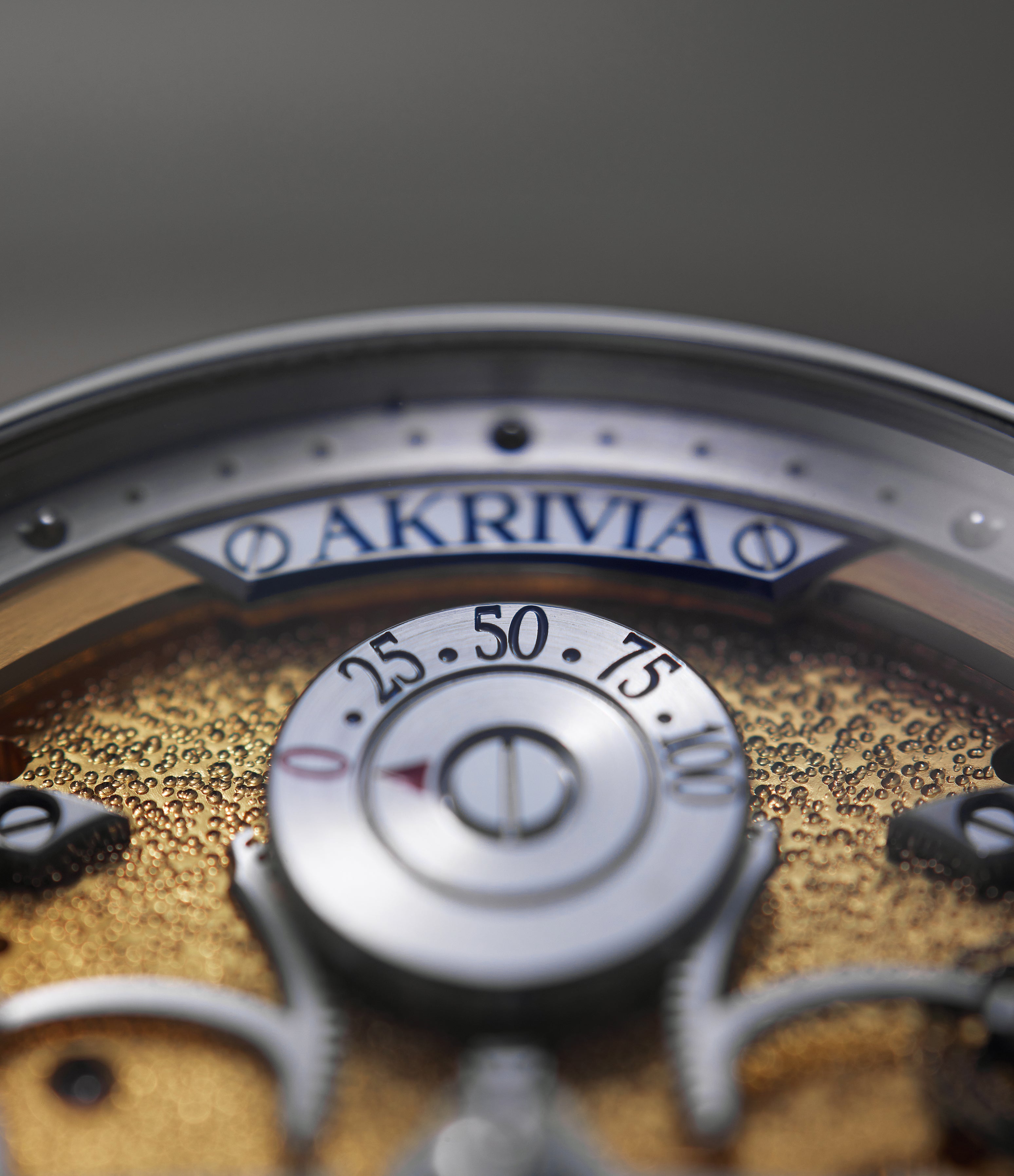

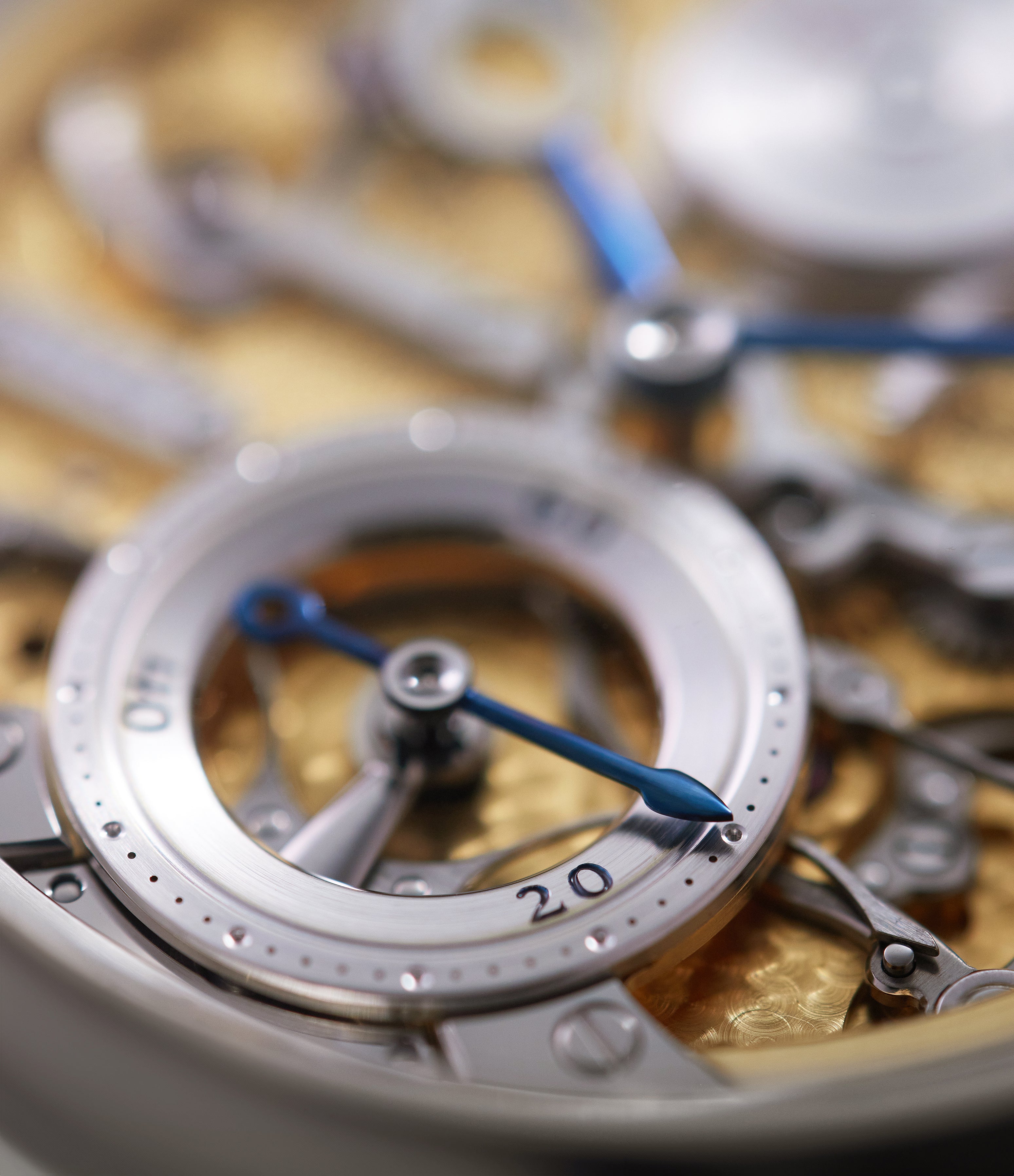

The second one, which Rexhepi refers to as a “mini complication”, was the zero-second reset function. A heart-shaped cam works together with the two symmetrical arms visible in the bottom of the subsidiary register. The arms were held by two tension springs – pulling the crown out springs the seconds hand to the zero position, aimed at more precise time setting and the kind of chronometric precision Rexhepi aims for. This function would find its way into several subsequent references.
The finishing found its way around the islands of mechanics with a thin disk of either brass or rhodium acting as the dial. The plate did not cover the whole of the dial side, especially in the lower-right quadrant that was visually dense with the mechanics behind the keyless works and the zero-second reset complication. South of this, the perlage on the baseplate was left exposed. The dial plate could be had in a range of finishes, including a frosted option in gold and grey. The more popular hand-hammered finish was also available in both colours.
Comparing earlier examples with later dials also shows the changing levels of hand engraving. For instance, while the power reserve indicator seems to always have been machine engraved in earlier examples, other parts such as the subsidiary seconds register and the cartouches bearing the serial number and brand mark appear to be done by hand. This is evident from their less consistent execution. However, this is no longer the case later in the series, with the engraving more consistent across the dial, pointing to the watchmaker transitioning to machine assistance.
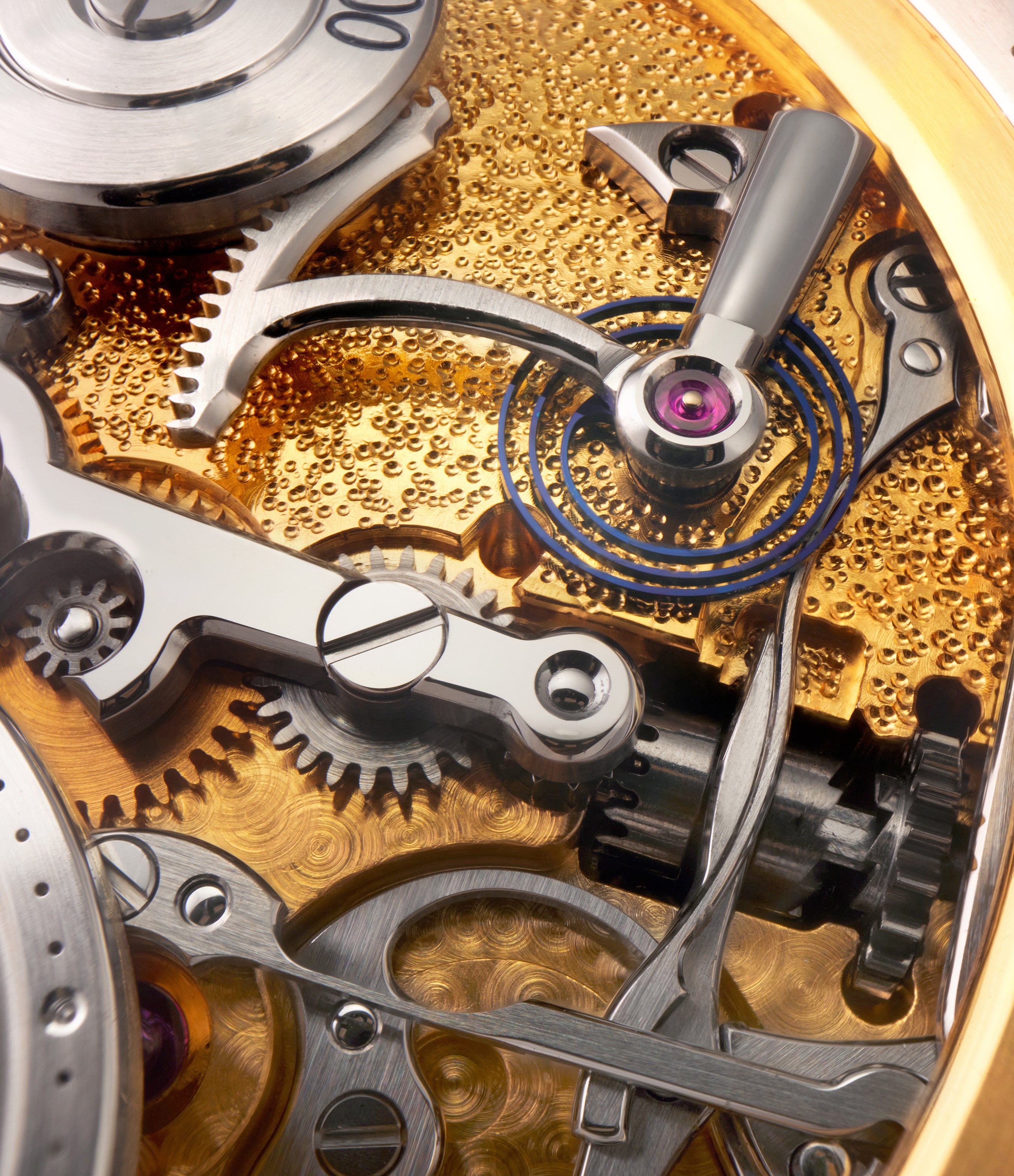

Notable also is the hour hand, which represented Rexhepi’s take on the observatoire style. With its oval aperture end – topped by a spade-like shape like on the minutes hand – it reinforces the form of the bezel that had been a visual hallmark of AKRIVIA. Just as clients could customise the colour of the engravings on the dial, they could also choose to either have the stainless-steel hands in their natural shade or heat blued.
The Case
One of the most noticeable changes was to the case. The AK-06 marked the first reimagining of the AKRIVIA case that had remained mostly unchanged since 2013. While the latter was complex, made up of 30 parts, the new case was much simpler in its construction. It featured all the details of the previous generation, but in a smaller 41.5mm diameter and at 9mm tall, was noticeably slimmer.
The cases could be had in stainless-steel or titanium, but we have seen examples in rose gold and there are reports of fewer than five examples in platinum as well. Then there are the elusive tantalum cases. While we know of only one completed example so far, our sources suggest that another case exists, even if it isn’t finished. Rexhepi, who was reportedly keeping it for his private collection, relented and has now acquiesced to finishing this for a valued collector.
In terms of dial combinations to be had with the AK-06, the serially produced titanium cases almost always appear to be paired with golden dials, while stainless-steel cases feature rhodium-plated dials. However, we are aware of a miniscule number that feature the opposite combination. This is a result of the watchmaker being fairly open to customisations.


In Context
Rexhepi has often spoken about how this was either going to be his last watch or the one that started a new phase of his watchmaking. He says, “It was an honest project and I was trying hard to do something new again. However, I was between frustration and relief. Then we released it and I knew straight away that my life [was] going to change.”
The AK-06 was almost immediately appreciated and it catapulted Rexhepi to levels of success that perhaps even he couldn’t have imagined. The fact that this success had come with a watch that bore a distinctly AKRIVIA aesthetic caused enthusiasts to then also look upon his previous work more favourably. However, we think that equally crucial were the slimmed-down case and the finishing on the dial and the movement sides on which Rexhepi had chosen to expend his energy instead.
The fact that this success had come with a watch that bore a distinctly AKRIVIA aesthetic caused enthusiasts to then also look upon his previous work more favourably. It is also notable that it is perhaps the last watch to bear the AKRIVIA name and the aesthetic that went with it.
“I was trying hard to do something new again… Then we released it and I knew straight away that my life [was] going to change.”
– Rexhep Rexhepi
What’s next?
These early references, crowned by the popularity of the AK-06 represent a distinct phase in Rexhepi’s story. That the AK-06 will also be last watch to bear the AKRIVIA name and aesthetic definitively concludes this chapter.
In the final instalment of this series, we will chronicle the watches that Rexhep Rexhepi created under his own name. This current phase, marked by confidence and classicality, in some way brings his story full circle.
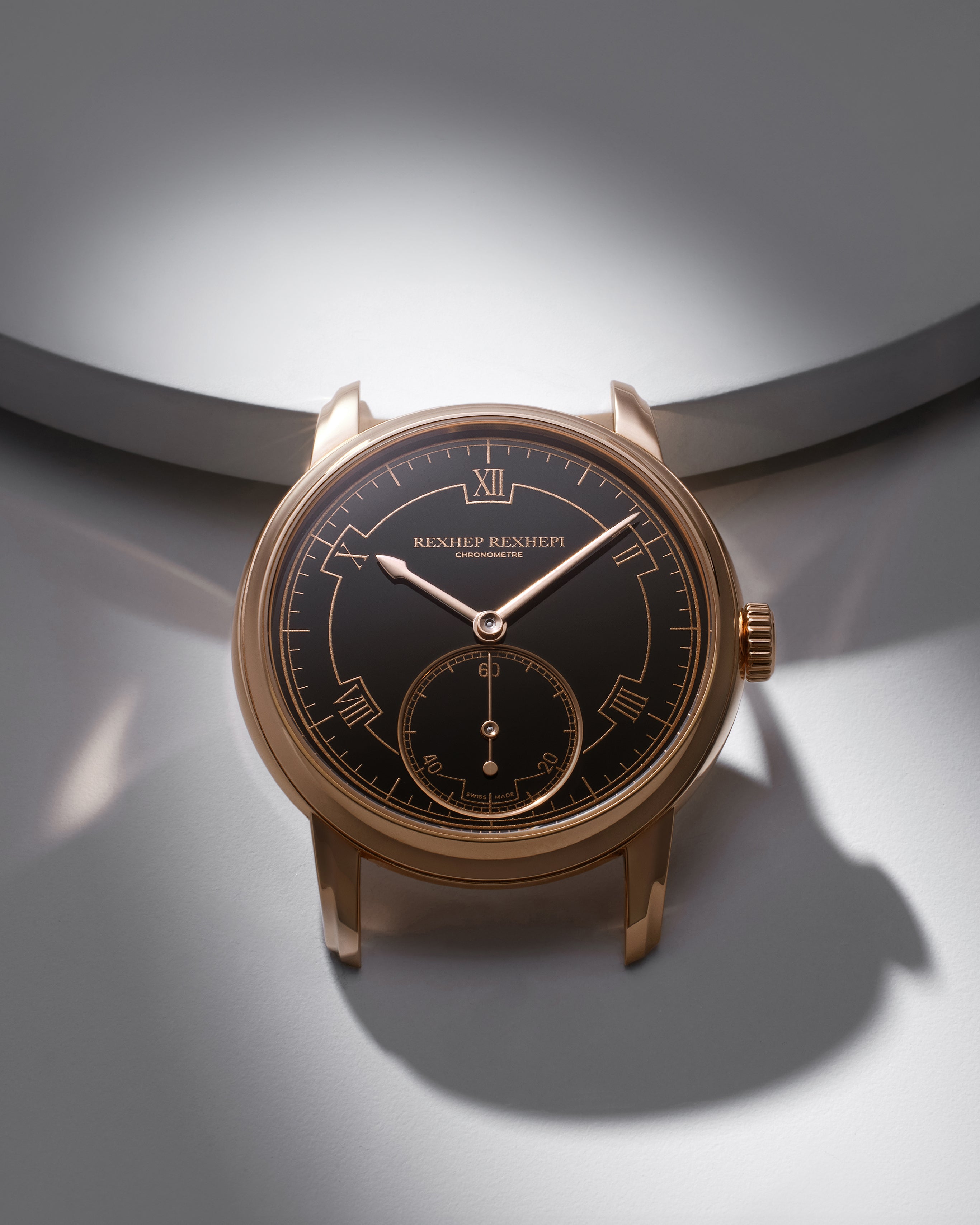

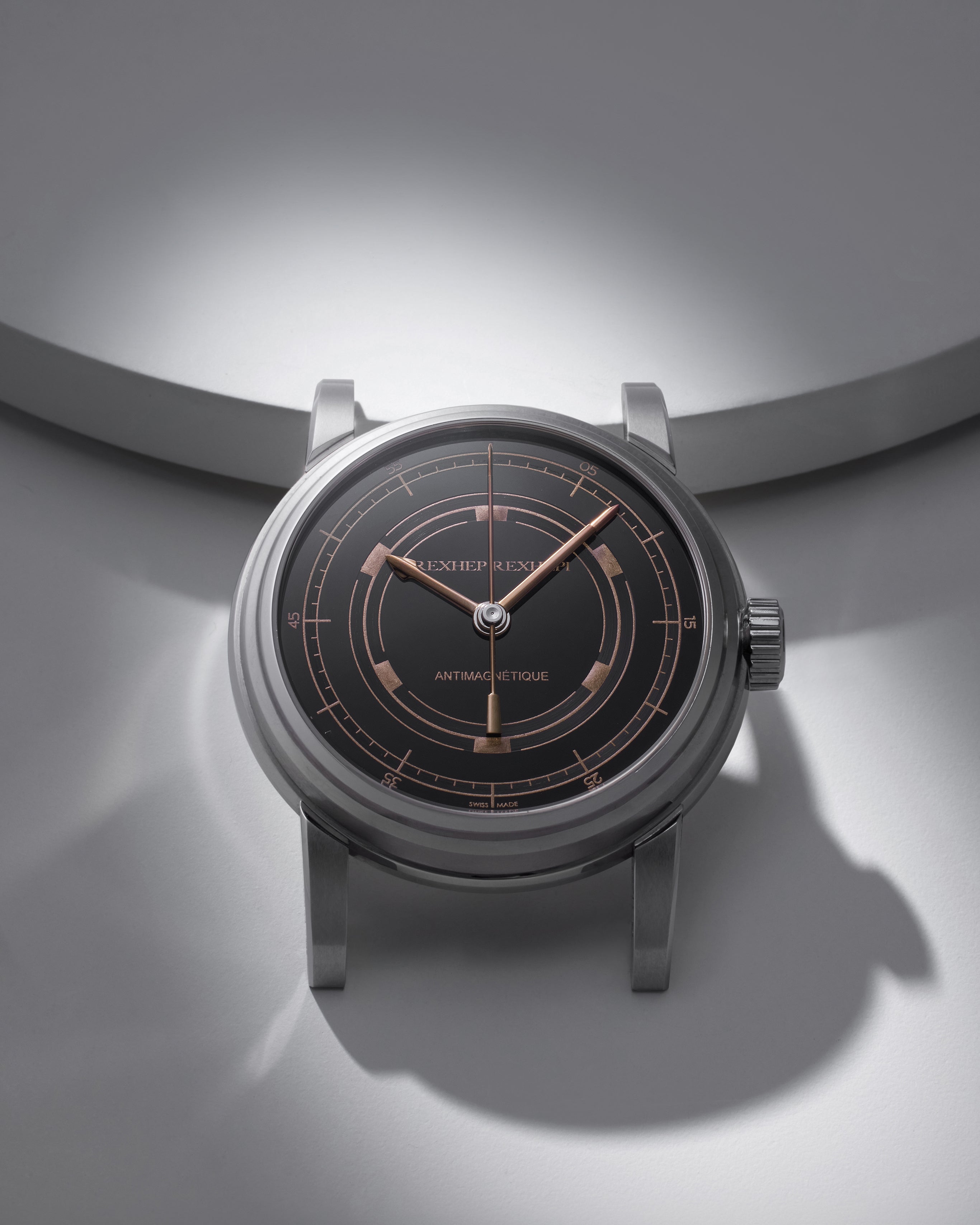

Our thanks to the following experts and collectors who have shared their time, expertise, and watches with us. This list includes Jean-Marc Figols, Philippe Dufour, Laurent Ferrier, Kari Voutilainen, Jean-Claude Biver, William Massena, Gaël Petermann, Wes Lang, Todd Levin, Firmin Li, André Gigon, Peter Wais, Theodore Diehl, Theo Danjuma, Mike Bindra and Jean-Pierre Hagmann. We would like to thank all of them for their input.
We are especially grateful to Rexhep Rexhepi, Annabelle Roques and the team at AKRIVIA for opening up the workshop and themselves to us and walking us through this remarkable journey they are currently on.




























































































